
The Legacy of Michigan's Indian Boarding Schools May 2024






When it comes to a brain or spine condition, you want a team of experts you can put your trust in right from the start. You’ll find them at Bronson — the region’s most comprehensive neuroscience center. Our specialists are skilled in treating a wide variety of neurological and neurosurgical conditions and work closely together to ensure each patient’s care is carefully guided from testing and diagnosis all the way through treatment and rehabilitation. For exceptional care, we’re the people to turn to.
Learn more at bronsonhealth.com/neuro





Encore is known for highlighting the good in our community, but sometimes there are stories on difficult topics that need to be told as well.
Our cover story about the Native American boarding schools in Michigan is one of those. It's hard to learn not only that Native children were torn from their families and communities and forced to attend schools where they were subjected to child labor and horrific treatment, but also that the last one closed as recently as the 1980s. Writer Robert Weir gives us a poignant piece on how survivors of those schools are working to heal from their experiences and reclaim and preserve the cultural identity and heritage that these schools tried so hard to eradicate.
Preserving a different kind of history is the topic of our Update story, in which we visit with Don Ramlow. He's one of the co-founders of All Ears Theatre, which performs plays in the all-audio traditions of the Golden Radio Age. Ramlow is devoted to seeking out lost recordings of radio shows that aired during this period, from the 1930s–50s, and then restoring and preserving them so others can enjoy them.

Speaking of labors of love, we also meet the founders and principals of Tye Chua Dance, a dance school in beautiful studios on the top floor of the Kalamazoo Nonprofit Advocacy Coalition building, in downtown Kalamazoo. Aimee Tye and Angi Polderman, both dancers since childhood, and Gene Chua, who took his first dance class in college, share their joy of movement with children and adults through classes in ballet and contemporary and modern dance.
In our Back Story profile we learn about another individual spreading inspiration. Dan Cunningham, aka The Organizer Man, talks about how his penchant for organizing led to an unexpected career as a social media influencer.
I hope that this issue not only generates inspiration for our readers, but also fosters an admiration for those among us who are resilient, dedicated and determined to make their lives and others' lives better.

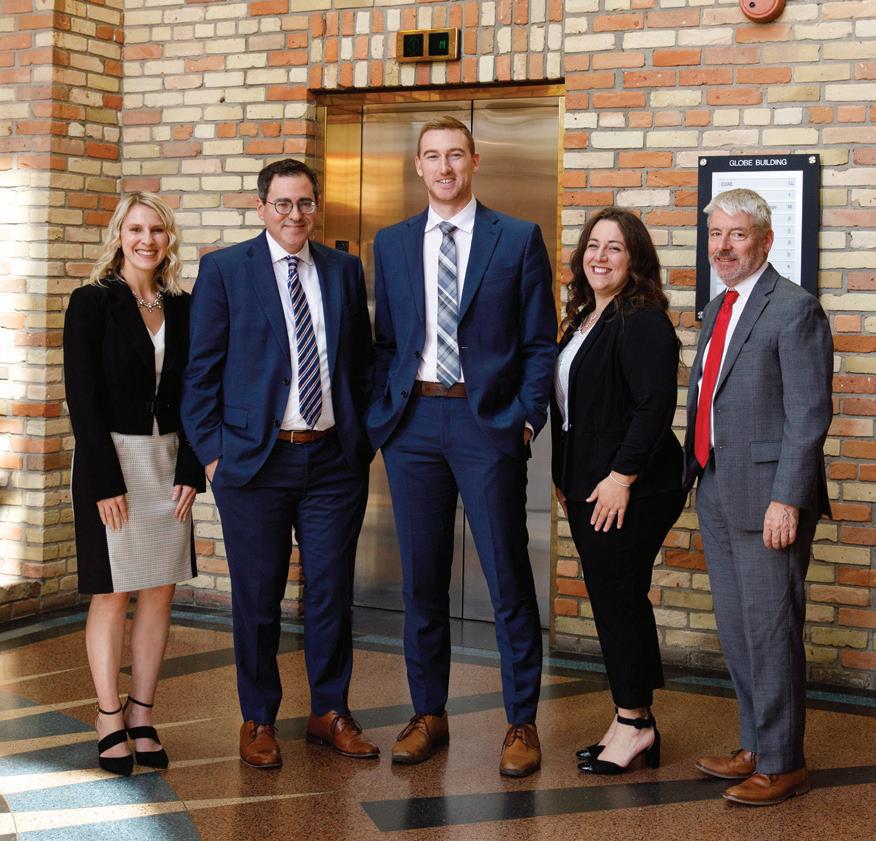


Zinta Aistars
Zinta, who wrote about the Tye Chua Dance for this issue, has her own history with dance. "For me, it was years of rehearsals in Latvian folk dancing, followed by performances locally, nationally, and on occasion even internationally. It was a connection with my family heritage, but it was also an experience that brought me the joy of dance, of movement, of a kind of freedom one can only feel when your feet leave the floor," she says. "In that respect, I could understand what Eugene Chua and Aimee Tye describe — the discipline, the joy. What they teach is more than dance. The Tye Chua Dance Studio teaches their students life skills, and they do so in a uniquely supportive community."

Marie Lee
Marie, the editor of Encore, admits that before she interviewed Dan Cunningham for this month's Back Story profile, she couldn't quite grasp the concept of making a living as a social media influencer. After talking with Dan, she was glad to hear she isn't alone. "Dan told me his own mom doesn't understand what he does," Marie says, "and even he is amazed that at 60 years of age and after years working in varied careers, including as a flight attendant and in restaurant and property management, he's finally found the perfect career."

Robert M. Weir
Robert's yearlong journey of researching and writing this month's cover story on Michigan's Native American boarding schools began when he attended the "Honoring, Healing and Remembering" ceremony last May at the site of the Mount Pleasant Indian Industrial Boarding School. "That started me on a journey I didn't know I would take, going deep into the educational trauma of indigenous people who attended these schools in Michigan," he says. He talked to many members of different tribes who attended the schools as well as those working today try to reclaim the pieces of Indigenous identities that these experiences stole from the children. "I am unspeakably grateful for their willingness to share stories that were very difficult to tell and for inspiring me with the healing journeys they are taking."
Robert also wrote the Update story on Don Ramlow and his effort to find and preserve “lost" radio shows. “This was one of my most fun and exciting articles to write,” he says. “Don is dynamic, with a host of tales that could fill multiple articles. He’s got a fascinating history in radio theater.”





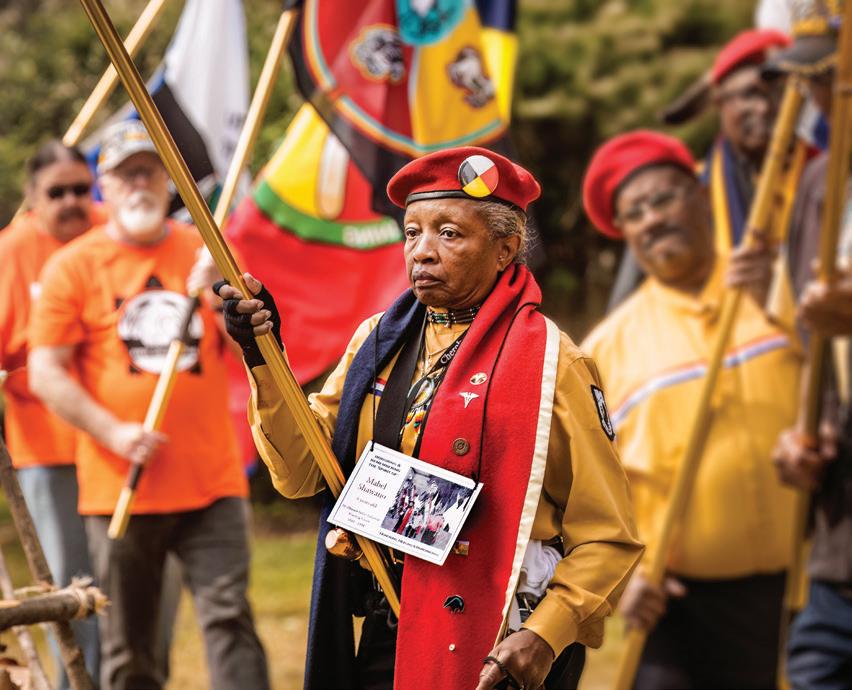

Something Nostalgic Beatles tribute comes to Miller
Those who lived through Beatlemania and those who didn’t can revel in the music of one of the most iconic rock bands of all time on May 14 at Miller Auditorium.
Rain: A Tribute to The Beatles, set for 7:30 p.m., is a recreation of a Beatles concert, from the iconic outfits to favorite hits of the four boys from Liverpool.
Tickets are $43–$63 and available at the auditorium’s box office, 387-2300, or at millerauditorium.com.



Something Two-Wheeled Week-long event promotes bicycling
Pump up those tires and get ready to roll as part of a weeklong celebration of biking May 11–18.
Kalamazoo Bike Week will feature dozens of bicyclingfocused activities, including group rides and organized trail riding as well as workshops on riding gravel and mountain bikes, bicycle maintenance, and bicycling safety for kids. In addition, information about local bicycle clubs, riding groups and shops will be available.
For more information, visit kalamazoobikeweek.org or the Kalamazoo Bike Week page on Facebook.

Something Green Expo Center to host Garden Fest
You can to get your hands dirty from 9 a.m.–3 p.m. May 18, when the Kalamazoo Garden Festival plants itself at the Kalamazoo County Expo Center.
The event will include vendors, live music and workshops, including presentations on vermiculture, garden and landscaping practices and trends, and making herbal salves. It is sponsored by the Michigan State University Extension Master Gardener Volunteer Program and is free to attend. For more information, visit tinyurl. com/Kzoogardenfest.

Area glass artists are hoping to blow away their competition at the Glass Blowers Battle May 3 and 4 at Glass Art Kalamazoo, 326 W. Kalamazoo Ave. This head-to-head competition will pit glass blowers against each other to create the best sculptures, functional art, centerpieces, marbles and pendants. The competition will be held from 2–11 p.m. May 3 and 11 a.m.–6 p.m. May 4. There is no cost to attend. For more information, visit glassartkalamazoo.org.
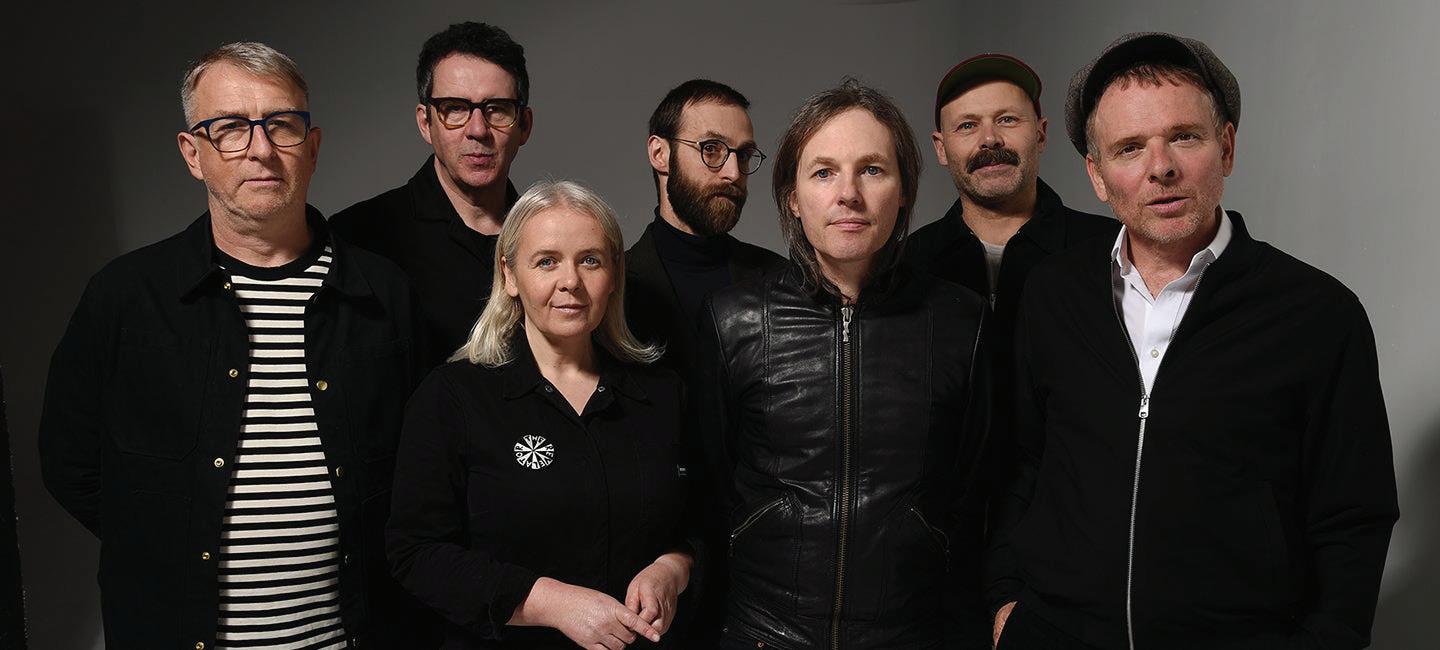
Eccentric Cafe May 6.
The seven-piece band was formed in 1996 and created a cult following with their first album, Tigermilk. The group has since released 12 albums, including 2023’s Late Developers
The show begins at 8 p.m., with Oregon singer-songwriter Hayley Heynderickx opening for the band. Tickets are $44 and available at events.bellsbeer.com or at the Bell’s General Store, 355 E. Kalamazoo Ave.

The months (years!) of preparation for each biennial Gilmore Piano Festival are almost as fulfilling as the actual festival. Almost. When the festival arrives (as it did on April 24), it’s a wild ride, and I love every moment. I hope you find events that entertain and inspire you within our packed schedule, which includes jazz, pop and classical music, along with films, talks, theater and master classes. Here are five must-see artists performing this month, before the festival wraps up May 12 with the inimitable Patti LuPone and her one-woman show, A Life in Notes at Miller Auditorium (sorry, I had to sneak in a sixth fave).
May 1 & 5

Gabriela Montero, a Venezuelan-born classical pianist, will take us on a trip from East to West in her solo recital, performing sonatas by Prokofiev, Rachmaninoff (his Sonata No. 2 is one of the most challenging works for a soloist) and Stravinsky. Not only that, but she will improvise a classical soundtrack accompaniment to Charlie Chaplin’s short silent film The Immigrant. Only someone of Montero’s incredible musicianship could revive the art of improvisation in classical music in a way that would make Beethoven, who was famous for his improvisations, envious. Montero is also a remarkable composer, and we have commissioned her to write a piano quintet that she will premiere with the Calidore String Quartet. Montero will perform her solo show, Westward, at 7:30 p.m. May 1 in WMU's Dalton Center Recital Hall. She will appear with the Calidore String Quartet at 2 p.m. May 5, also at the Dalton Center Recital Hall.

Paul Lewis
April 30, May 2, 4 & 6
The composer Franz Schubert is very close to my heart. His piano sonatas embody the ideal search for beauty and peace in a flawed world, and their exploration of emotional landscapes is sheer perfection. The English pianist Paul Lewis has returned to The Gilmore for a deep dive into every one of Schubert’s 12 sonatas over the course of four recitals. Schubert was always searching but not finding answers to the unanswered questions, embodying a wandering spirit, never finding rest or peace. His music remains timely and relevant, and these recitals are a rare epic presentation likely never to be repeated here. Lewis's recitals are at 2 p.m. April 30 and May 2 in Wellspring Theater, 359 S. Kalamazoo Mall, Suite 204, and 2 p.m. May 4 and 7:30 p.m. May 6 in Western Michigan University's Dalton Recital Hall.
Yuja Wang
May 8
The Gilmore first came to know and love Yuja Wang when she was named a Gilmore Young Artist in 2006. Eighteen years later, we do take a little pride in her rocketing career. I’m sure many of you recall when she set the stage alight with her Chenery Auditorium performance at the 2022 Piano Festival — which closed with six encores! More recently, she slayed every single one of Rachmaninoff’s piano concertos in a marathon performance at Carnegie Hall last year, and I was thrilled to be there. I mean it when I say, do not miss this concert by this phenomenal talent. The concert is at 7:30 p.m. May 8 at Chenery Auditorium, 714 S. Westnedge Ave.

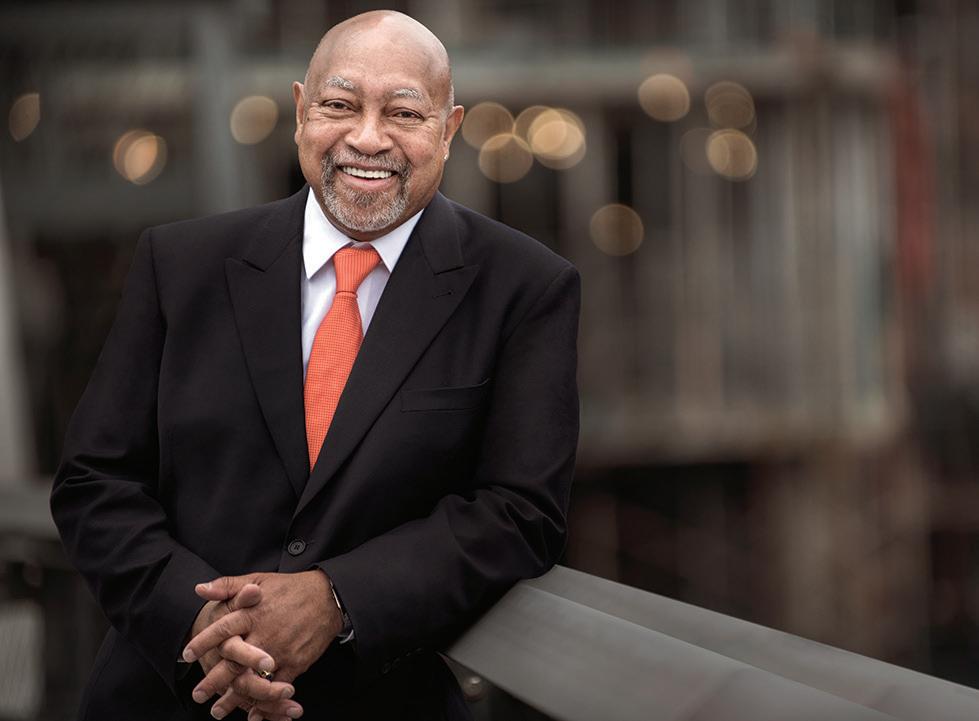

May 4
At 80, Kenny Barron sounds as fresh and thrilling as ever. It’s incredible to witness his staying power and continued evolution as a jazz pianist and composer. It’s no surprise he’s been nominated a dozen times for a Grammy Award and was named a National Endowment for the Arts Jazz Master. When you listen to Barron, you hear the last 50 years of jazz in America — from the classic mid-century be-bop to the Latin and improvisational sound he has mastered. He and his trio will perform two shows, at 6 and 9 p.m. May 4 in WMU’s Shaw Theatre. Between the two events, he will join Gilmore Director of Jazz Seth Abramson for a conversation in WMU's Gilmore Theatre Complex atrium. I can’t wait.
May 9 & 11
2002 Gilmore Artist Piotr Anderszewski and I first chatted about this year’s festival 18 months ago. Anderszewski is a fiercely intellectual and deeply emotional artist whose quest for artistic truth makes him seem a bit eccentric to some. But these qualities combine to create performances that leave critics and audiences breathless and blinking in disbelief. He’ll be at the festival for a whole week: teaching, performing, chatting and sharing. Anderszewski will give two public performances. He will perform a solo recital at 7:30 p.m. May 9 at the Dalton Center Recital Hall. And in his performance with the Kalamazoo Symphony Orchestra during a concert at 7 p.m. May 11 at Chenery Auditorium, he will play-conduct Beethoven from the bench, a skill almost impossible to describe. Also featured in that concert will be 2022 Gilmore Young Artists Janice Carissa and Clayton Stephenson, performing together on two pianos. Join us for a unique evening.
About the Author
Pierre van der Westhuizen, a native of South Africa, is executive and artistic director of The Gilmore, which presents a biennial piano festival, a Rising Stars and Piano Masters series of performances, and robust educational programming in Kalamazoo and Battle Creek. He came to The Gilmore after six years as president and CEO of the Cleveland International Piano Competition. He lives in Kalamazoo with his wife, Sophie, and their four children. The couple, who are concert pianists themselves, perform occasionally in Southwest Michigan.
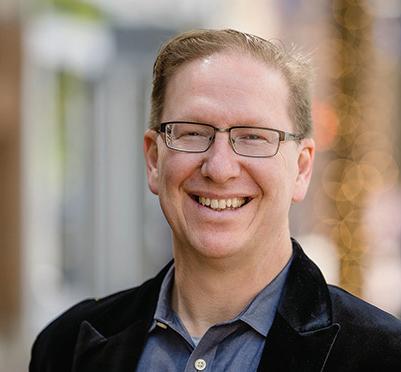
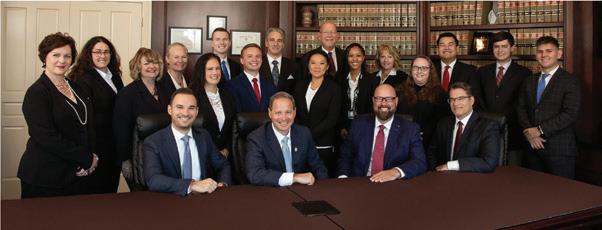
Q:
Q:
A:
A:
Yes, pursuant to the terms of the applicable Trust. Further, MCL 700.7706 provides several avenues for when a trustee may be removed:
• e trustee commits a serious breach of trust.
• Lack of cooperation among co-trustees substantially impairs the administration of the trust.
• Because of un tness, unwillingness, or persistent failure of the trustee to administer the trust e ectively, the court determines that removal of the trustee best serves the purposes of the trust.
• ere has been a substantial change of circumstances, the court nds that removal of the trustee best serves the interests of the trust bene ciaries and is not inconsistent with a material purpose of the trust, and a suitable co-trustee or successor trustee is available.
It depends. Many countries are a party to the Hague Convention on Form of Testamentary Disposition of 1961 (“HCFTD”). As a result, as long as your will complies with the laws of your home country then it will be recognized by countries which are a party to the HCFTD. Major countries which are party to the HCFTD include: Albania, Antigua and Barbuda, Armenia, Australia, Austria, Belgium, Bosnia and Herzegovina, Botswana, Brunei Darassalam, China, Croatia, Denmark, Estonia, Fiji, Finland, Former Yugoslav Republic of Macedonia, France, Germany, Greece, Grenada, Ireland, Israel, Italy, Japan, Lesotho, Luxembourg, Maritius, Montenegro, Netherlands, Norway, Poland, Portugal, Republic of Moldova, Serbia, Slovenia, South Africa, Spain, Swaziland, Sweden, Switzerland, Tonga, Turkey, Ukraine, and the United Kingdom. Notably, the United States is not a party to the HCFTD, so foreigners do not have the same rule applicable to them here in the United States. at said, and the HCFTD aside, a will from another country may be valid under the international rule of comity.
Most courts may be reluctant to remove a trustee for a technical breach that does not result in material harm to the trust bene ciaries or the trust estate. In lieu of removing a trustee, the court may order other relief it deems necessary to protect trust property or the interests of trust bene ciaries. If you are considering ling a petition to remove a trustee, it would be wise to talk with an estate litigation attorney in detail.
If you own real or personal property in a foreign country, you should seek legal counsel for guidance on the disposition of those properties.



Please send your questions to Michael J. Willis, J.D., C.P.A.
Please send your questions to Michael J. Willis, J.D., C.P.A.
Willis Law 491 West South Street Kalamazoo, MI 49007 269.492.1040
Willis Law 491 West South Street Kalamazoo, MI 49007 269.492.1040

In today's world of Spotify, satellite radio, and podcasts available with the click of a mouse, it's hard to remember that radio was once the dominant form of entertainment in people's homes. It may be even harder to fathom that someone would search out and preserve radio programs from nearly a century ago, but that's what Don Ramlow is doing.
Ramlow, 75, is perhaps best known in Kalamazoo as a founder and former director and executive producer of All Ears Theatre, a local organization started in 2002 that produces live audio theater performances in the style of the Golden Age of Radio, a 30-year period from the 1930s to early 1960s when shows like The Lone Ranger, Amos ‘n’ Andy, Fibber McGee and Molly, and The Bickersons kept audiences glued to their radios.
Ramlow has pulled back from involvement with All Ears in the past five years, but not from his passion for radio theater. Today, he puts that energy into finding and preserving recordings of radio programs made almost a century ago.
It’s estimated that during the Golden Age of Radio 250,000 individual shows were broadcast, says Ramlow, in genres from comedy and mystery to sci-fi, crime and westerns. But back in the day, they weren't considered something to be saved for posterity. That is why only 10 percent of those shows are known to have been saved on recorded media. The rest are what preservationists call “lost radio” or “noncirculating” recordings held in private collections.
Don Ramlow with his reel-to-reel tape deck and tapes and vinyl copies of old radio shows he's found.
In honor of Encore’s 50th anniversary, we are revisiting stories from past issues and providing updates. Robert M. Weir first wrote about Don Ramlow for Encore in October 2005, a few years after Ramlow and Richard Hughey co-founded All Ears Theatre. To read the original story, see encorekalamazoo.com/donramlow-keeps-old-time-radio-alive/.
Since 2015, Ramlow has been a member of the Knights of the Turning Table, a loosely organized group of 20-some preservationists from across the U.S. and Canada who, over the last two decades, have found hundreds of lost shows and located greatly improved recordings of circulating shows.
The Knights don’t keep the recordings they find to themselves but rather put them on the internet for others to access. “We have a shared philosophy that these recordings need to be made available to the public, to anybody,” says Ramlow. (Copies of Golden Age radio shows, including many recordings found by the Knights, may be found at Internet Archive, archive.org.)
Rudimentary recordings
The earliest experimental recordings of radio programs were made on magnetic wire recorders and Edison wax cylinder recorders, but the recording capacity was short, capturing only program segments. The first recordings of full shows were cut with a diamond stylus into 12-inch or 16-inch vinyl — not for posterity but so production studios could prove potential copyright infringement. These discs were stored in closets, but when the discs became too numerous or cumbersome, they were tossed into garbage dumpsters.
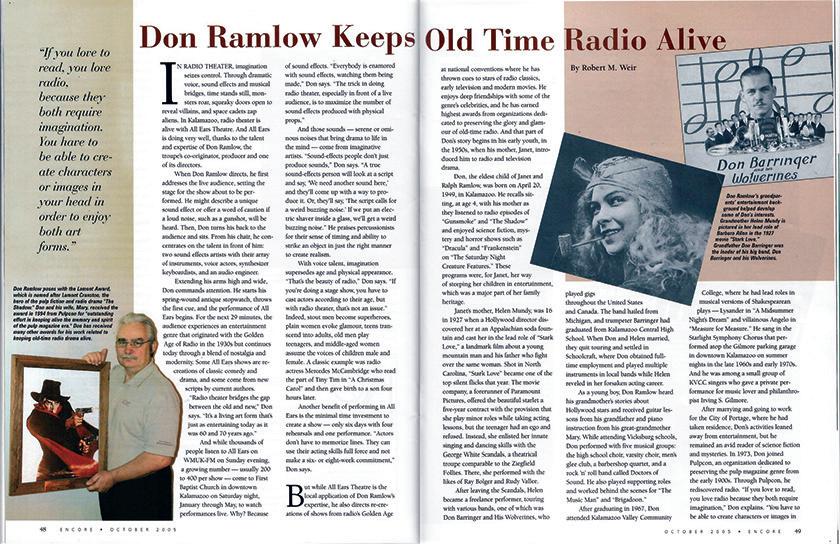
“Fortunately for preservationists,” Ramlow says, “some astute employees would call somebody and say, ‘Hey, they just put a big batch of discs out there. Come by and see what you can salvage.’”
During World War II, vinyl was not readily available as a recording medium, so studios cut recordings on glass discs. Listeners used amateur home versions of disc-cutting lathes to record aired programs on thin flexi-discs, which had a coating of plastic applied to cardboard. Only a few of these have survived.
But the Armed Forces Network recorded shows on vinyl, using the highest-fidelity technology available, and shipped discs to troops throughout the world. Ramlow says that many lost shows have been found on those vinyl discs and that the playback quality is often quite good.
When magnetic tape became a popular recording medium in the 1950s, it was a halfinch-wide, reel-to-reel format and expensive. Studios would record an episode, save it for a
few weeks, then erase the episode and reuse the tape to record a new episode. As a result, Ramlow says, “after 1956, there was a huge drop-off of preserved shows.”
But those years had some of the best shows ever produced, he says. “By the 1950s, radio theater had been going on for 20 years. The expertise had grown. The professionalism had grown. The writing, the acting, the producing, the technology, but television was fast gaining popularity.
"Those years were really the top,” he adds wistfully. “They were the best radio theater that nobody listened to.”
Where recordings are found
Generally, the Knights of the Turning Table find individual recordings or a few recordings at flea markets, garage sales and antique sales. Larger collections tend to come from estate sales.
“In the last five years,” Ramlow says, “several major collectors of old-time radio either got to the point where they couldn’t






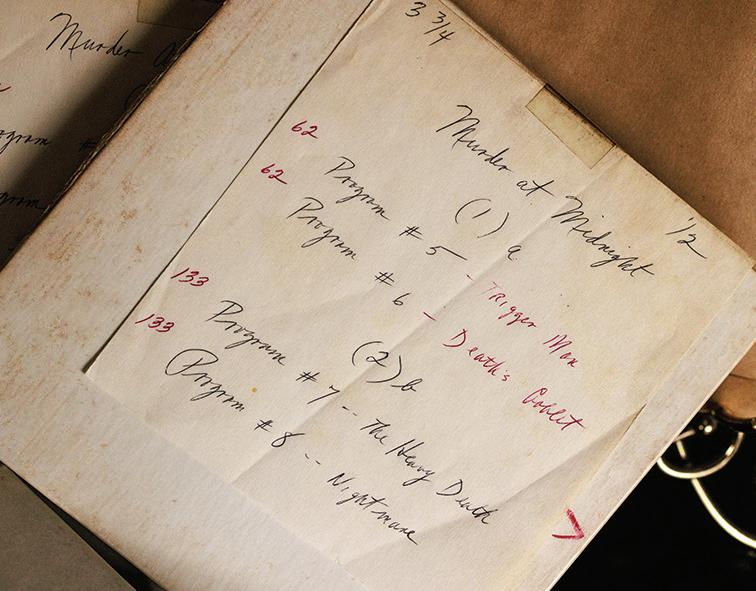

work with their collection or they passed on and the heirs didn’t want to keep the collection. They would approach a member of our group or other people and say, ‘I want to make these available to the public.’”
Sometimes the Knights pool their money to buy newly discovered recordings, but they don’t attempt to outbid wealthy individuals, who tend to buy and then keep these treasures to themselves, Ramlow says.

Ramlow tells of how shows are sometimes brought into circulation in a less conventional manner. One day at a radio theater convention, he purchased three flexidiscs for $3 each for the espionage thriller show Counterspy. “I didn’t have a way to play them, but I bought them anyway," he says. "I mailed them to a friend in California. I’ll be a son of a gun if they weren’t complete episodes of non-circulating shows.
“You never know when or how a lost show is going to surface.”
Once recordings are found, though, there's work to be done.
If the Knights acquire a large collection, each person will take a batch of recordings and begin the process of cleaning the original media, then copy the originals to make computerized digital masters, which can be enhanced even further.
Ramlow prefers to preserve recordings that were made on magnetic tape. “I’m better equipped to restore reel-to-reel tape,” he says. “Tape is fragile, so I always clean the tape-deck heads with a Q-tip and a brush between each reel.
“In some cases, the tape squeals (because its binding material breaks down as it passes the playback heads). The way to fix the squeal — and it’s scary — is to bake the tape in an oven at a modest temperature for four or five hours. That dries out the oils (in which the magnetic particles are suspended) so they don’t squeal.
"Sometimes I’m running the tape past the playback heads and there’s a pool of black magnetic powder falling beneath the machine. That’s stuff falling off the tape, which means the original is no longer usable. But I keep it (the process) going because I’m getting the new master before the magnetic medium falls away.”
Knights who work with vinyl recordings clean the discs, then remove the sounds of scratches and pops from the digital master. Ramlow says that a preservationist who specializes in vinyl discs can spend thousands of dollars on needles and stylus cartridges.
“There are special needles for 78 rpm discs and special needles for 33-1/3 rpm discs. They come in different micro sizes," Ramlow explains. "Then you have truncated needles, which means they’re cut in a certain way, and vertical needles. If the original disc has been played many times, the grooves will be wider, so you need a larger needle for a better fit because a smaller needle will move back and forth in the groove.”
Then there are metal discs, made of aluminum or steel, that engineers experimented with in the 1930s and early ’40s. These were coated with lacquer
into which the recording lathe cut the groove, but they’re also subject to acidification and delamination. “The lacquer turns white, and pieces fall off the disc,” Ramlow explains. “When that happens, the disc is worthless.”
But, he adds, people still save the pieces in a sealed plastic bag because a solution is on the horizon. “The technology isn’t quite there yet, and the equipment is very expensive,” Ramlow says, “but soon it will be possible to lay all the
pieces on a table and have a computer scan the grooves, no matter where they are on the table, and electronically put the puzzle back together.”
Even for vinyl discs that are still in one piece, Ramlow foresees the day when a computer will scan the grooves and create a digital master. “We’ll be able to get a wonderful recording without ever dropping a needle on the disc.”


'If we don’t speak now, no one will ever know 'Paul Walker, left, holds a healing staff bearing the names of the children who died at the Mount Pleasant Indian Industrial Boarding School while standing next to survivors of Holy Childhood of Jesus School, a Native American boarding school in Harbor Springs. The survivors, wearing orange shirts, are, from left, Sharon Skutt, Linda Cobe, Kim Fyke, Marilyn Wakefield and Debra Delk.
 Brian K. Powers
BY RORBERT M. WEIR
Brian K. Powers
BY RORBERT M. WEIR
Editor’s Note: This article germinated when Encore contributor
Robert Weir attended a Native American ceremonial event, “Honoring, Healing, and Remembering,” in Mount Pleasant, on June 6, 2023. That date marked the anniversary of the closing of the Mount Pleasant Indian Industrial Boarding School (MIIBS), which operated from 1893 to 1934. In this article, Weir relates his experiences from throughout the day — sunrise to late afternoon — and what he learned about the untaught history of Indian boarding schools in the United States.
L ight from the sun, still below the horizon, casts a warm glow in the morning sky on the western edge of Mount. Pleasant. A slight breeze caresses a solitary sentinel tree. The gold letters of a Michigan historical marker identify this place as “Indian Cemetery,” established by the Methodist Episcopal (Indian) Church in the 1850s. (Editor's note: The word “Indian” is used in this article only in a historical context. The preferred terms are Native American, Indigenous, or a member of a particular tribe.)
Only a few grave markers, pale white and covered with black lichen, dot the green grass. They date to the mid-1880s and early 1900s. Only one gravestone indicates the burial site of a child. His name is John Thomas. He died at 12 years, 2 months, 20 days.
“He died along with his sister. They were twins. And they had a brother (buried) out there,” says a man, gesturing across the cemetery lawn. “The school didn’t make good records.”
Another man stands in front of a gravestone, solemnly reading the name of the person buried there. He’s wearing the cap of a military veteran.
A man with an aqua-blue pendant on his chest supported by a string of beads around his neck sets up a microphone and portable speaker. Native American flute music soon fills the air.
Others arrive, and soon rows of chairs will be filled by 150 people, including ceremonial leaders.
The man who leads the pipe ceremony blesses the tobacco, lifts a pipe high above his head, and says, “We don’t use bad words here. Nothing but positive love here.” The pipes are passed among the attendees, who have the option to take a puff or not.
Women wearing traditional blouses and ribbon skirts of red, orange, and blue conduct the water ceremony, a tribute to “the life substance that empowers everything in creation.”
Next comes the strawberry ceremony, honoring the healing power of that fruit. “Strawberry plants have runners. Like our community, we have roots and runners that connect each and every one of us and help one another be strong," the attendees are told.
Such strength and determination have been necessary for Beatrice Menasekwe Jackson. A Michigan resident, she travels the U.S. and Canada — 70,000 miles a year — looking for unmarked graves of children who died in the Indian boarding schools. She has traveled here from the now-closed Kamloops
Indian Residential School, in British Columbia, where the bodies of 215 Native American children were found in May 2021.
“We’re praying for the children," she says. "We say, ‘I’m sorry for what happened to you.’ The Creator, she takes the children home. She takes them by the hand so they know they are loved.”
The ceremonies move from the cemetery to the nearby campus of the former Mount Pleasant Indian Industrial Boarding School, now owned by the Saginaw Chippewa tribe. The campus covers 320 acres. It once had 37 buildings, but only seven remain. From 1893 to 1934, an average of 300 students in grades kindergarten through eighth grade attended the school annually.
The first Indian boarding school was opened in the U.S. in 1879. Attempts to educate and culturally assimilate Native American children on their own reservations had failed, and U.S. General Richard H. Pratt, a veteran of the Civil War and the Indian Wars, created the first off-reservation Indian boarding school at an abandoned military base near Carlisle, Pennsylvania. The initial enrollment was 147 students, ages 6 to 25, most of whom were transported from their homes west of the Mississippi River. More than 10,000 children would attend this school before it closed in 1918.
“Kill the Indian in him, but save the man” was Pratt’s motto. He designed the boarding school curriculum to instill military regimentation, deprive the children of their heritage, and assimilate them to the laws and lifestyles of European Americans. Similar schools operated in Canada, Australia and New Zealand under the name “residential schools.”
Over the following century, several hundred such schools would operate in 37 U.S. states or territories. The number varies depending on the source: 367, 408 or 523. Many of these schools were operated by religious institutions, primarily Catholic and Episcopalian.
The National Native American Boarding School Healing Coalition (NABS) says that by 1900, 20,000 Indigenous children were housed in the boarding schools. By 1925, that

number rose to almost 61,000, or 80 percent of the country’s school-age Native children.
The official number of these schools in Michigan also varies. The Michigan Historical Society says three existed, one each in Baraga, Harbor Springs and Mount Pleasant, while NABS says there were eight, including an orphanage in Baraga, a Catholic boarding school in Schoolcraft County, an orphanage in Marquette, a mission school on Mackinac Island, and a mission house in Omena, on the Leelanau Peninsula.
In 1928, an 847-page report to Congress titled “The Problem of Indian Administration," issued by the Institute for Government Research Studies (Brookings Institution), revealed many deficiencies of the schools, including that they were crowded beyond capacity and had insufficient food, jail-like punishment, substandard medical care, and an alarming prevalence of tuberculosis, and their operations were supported in part by student labor.
Despite the report's requests for Congressional funding to improve these conditions and recommendations that these children “attend school in the neighborhood of their homes," Indian boarding schools continued to operate as they were, with some schools not closing for another halfcentury.
“The people who administered the school (in Mount Pleasant) saw themselves as altruistic,” says Colleen Wilson-Rood, a sociology professor at Central Michigan University and the University of MichiganDearborn, who leads a guided tour of the Indian Industrial Boarding School campus. “They referred to themselves as ‘friends of
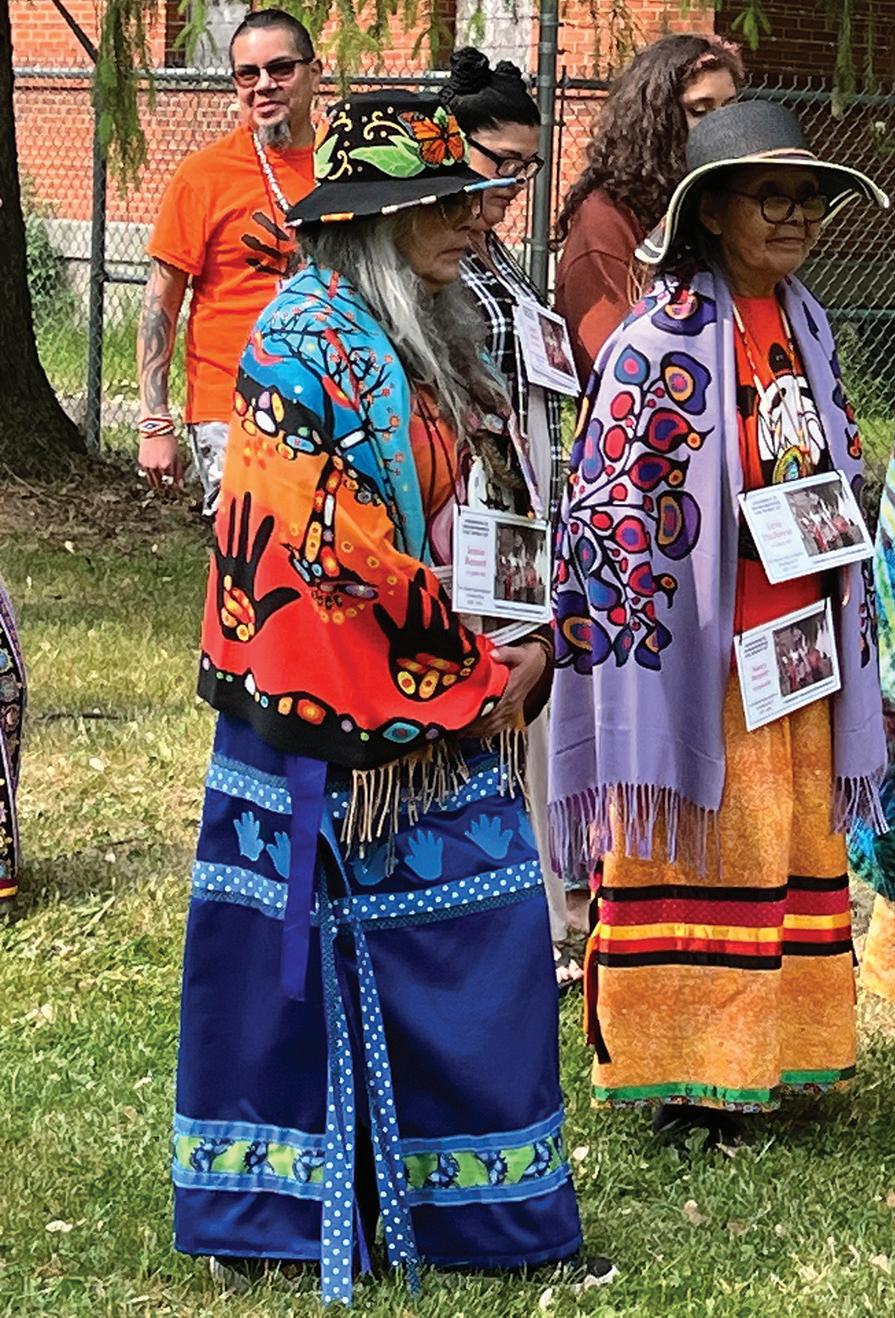
From left: The healing staff containing the names of the 227 children who died while attending the MIIBS during its years of operation from 1893 to 1934; women in colorful traditional clothing march during the grand entry wearing cards bearing the names and photos of children who died at MIIBS; and Linda Cobe, author of a memoir titled, Red, White & Blues, with the card she carried for Joe Alexander, a student who died at the school.
the Indians,’ preparing the ‘savage children’ for citizenship.
"Some of the children were scooped up and taken from their homes to schools hundreds of miles away. Oftentimes, parents were coerced into giving their children up. They were told they were not caring for their children properly and threatened with jail time and fines.”
Administrators and staff of the school in Mount Pleasant would parade the children, attired in prim-and-proper Eurocentric clothing, into a different local church every Sunday to show off the school's "good work."
Stories from survivors
Among the lessons learned by students at the Indian boarding schools were many hard ones.
Children were subject to neglect and physical, verbal, emotional and sexual abuse. They were made to take Christian names. Their hair was cut. And they were taught to “snitch” on each other. Punishment was inflicted by older students on younger students with whips, canes and sticks.
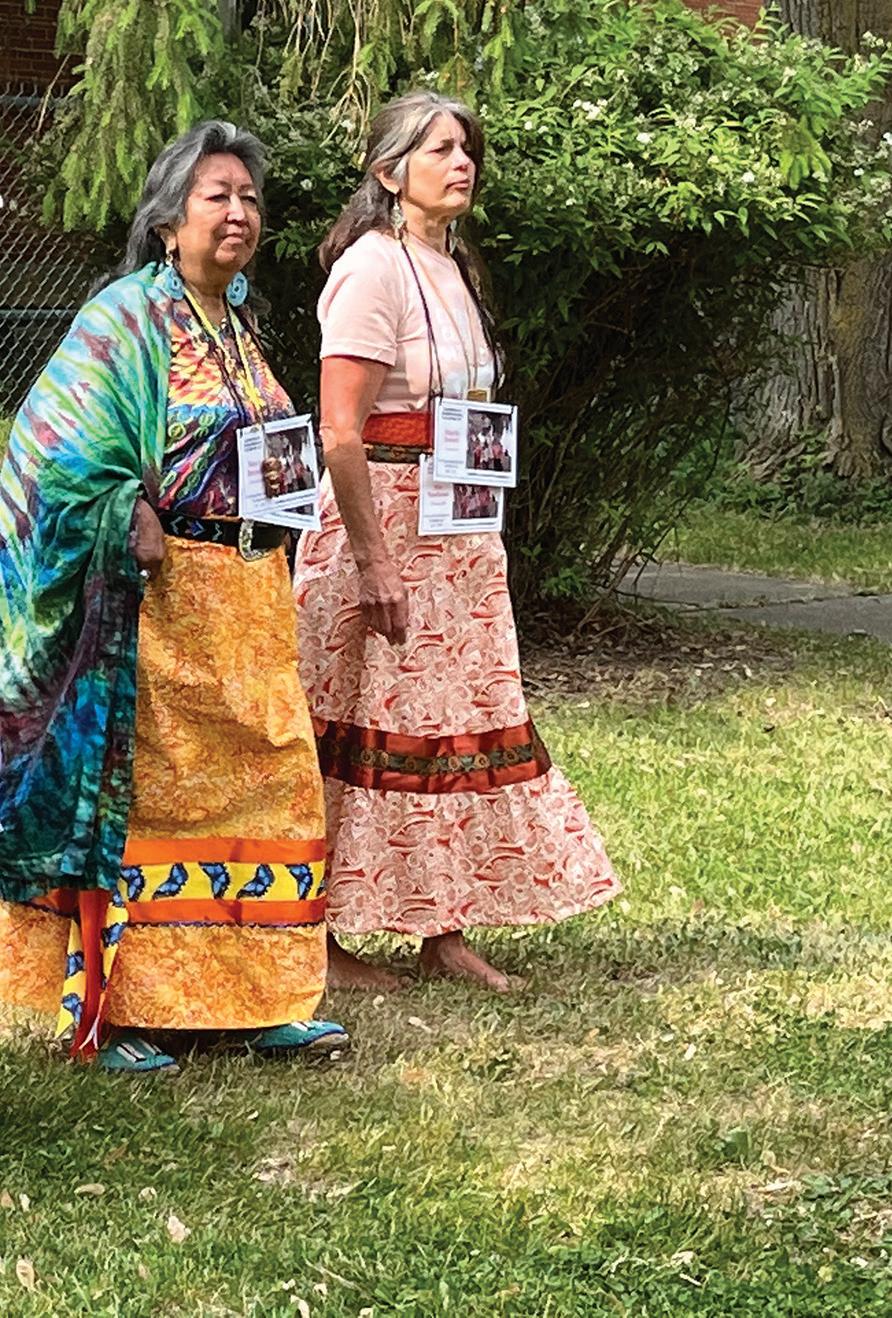
Two upcoming events offer opportunities to learn more about the former Indian boarding schools in Michigan and to become involved in healing and remembering:
The Truth about Indian Boarding Schools — 1–4 p.m. May 30 at the Community Center on the Pine Creek Reservation of the Nottawaseppi Huron Band of Potawatomi, in Fulton. This class will feature a panel of survivors of the former Holy Childhood of Jesus boarding school, in Harbor Springs, and Tom Biron, a former member of the Native Justice Coalition and an adjunct instructor at Northern Michigan University. The event is sponsored by Osher Lifelong Learning Institute (OLLI) of Western Michigan University. Register at wmich.edu/ olli or via OLLI’s summer course catalog.
Honoring, Healing, and Remembering — June 6 on the grounds of the former Mount Pleasant Indian Industrial Boarding School, in Mount Pleasant. The public is welcome to attend this event, hosted by the Saginaw Chippewa Tribe, that recognizes and honors the victims and survivors of Indian boarding schools. More information can be found at the Saginaw Chippewa website, sagchip.org.
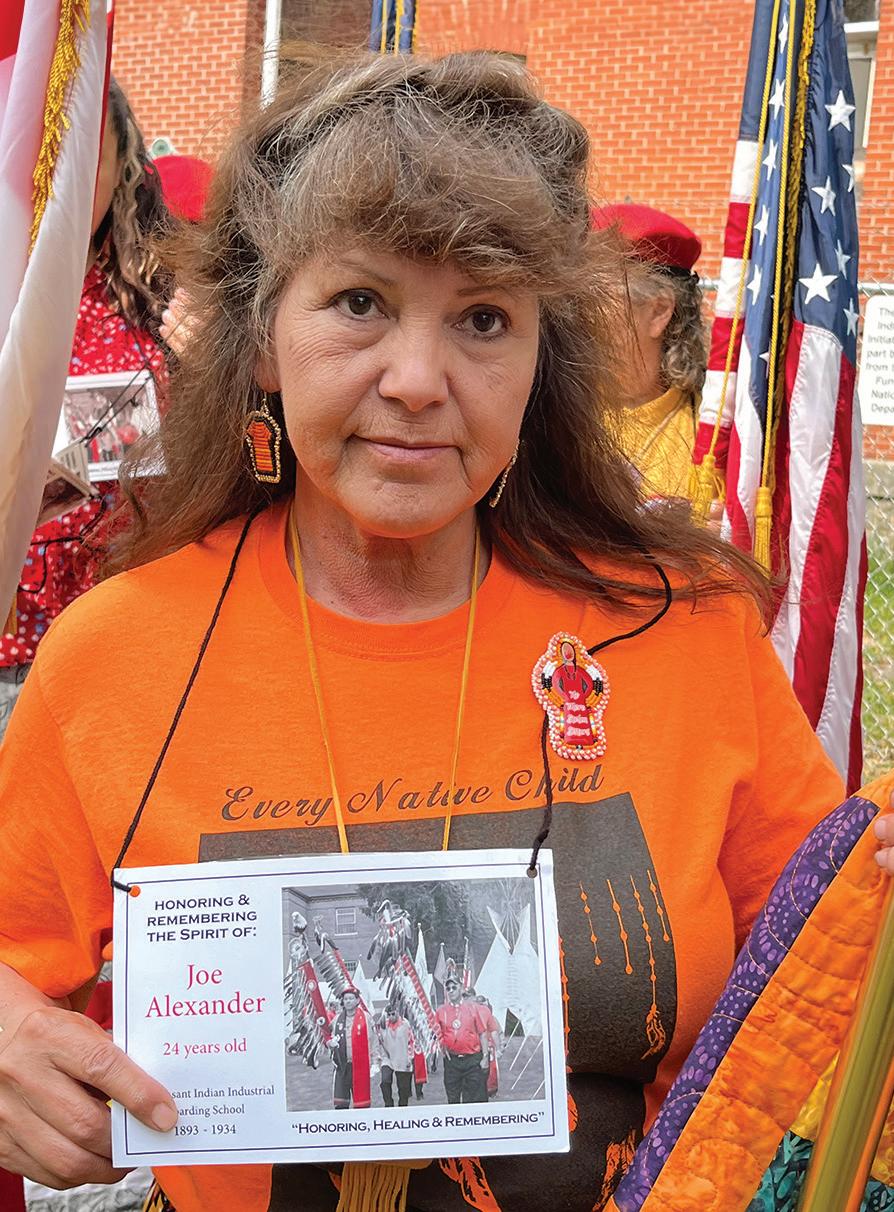
Child labor was part of the curriculum. The girls washed clothes and bedding in the hot basement and were taught to sew and be domestic servants. The boys farmed the fields and were trained to be laborers in the Industrial Revolution.
Many children were not allowed to go home at the end of the school year, but instead were sent to live with non-Native families, where they worked from sunrise to sunset. The money they earned was paid to the school, not to the children.
Four women — all Anishinaabeg elders, known as kwewag in their Ojibwe language — are here at the Honoring, Healing, and Remembering ceremony to speak as survivors of Holy Childhood of Jesus School, in Harbor Springs, one of the last Indian boarding schools in the nation to close. Holy Childhood opened as an Indian boarding school in 1884, and the School Sisters of Notre Dame began serving there in 1886. It ceased operations in 1983, and the building was demolished in 2007.
One of the women, Sharon Skutt, tells the crowd, “We’re not here to tell a story. We
speak truth. If we don’t speak now, no one will ever know.”
Skutt attended Holy Childhood from 1967 to 1970, entering at age 11. “We had to wear rollers in our hair every day. My mom didn’t know that, and I didn’t have rollers. Sister Naomi shoved me at one of the girls and said, ‘Get some rollers in this girl’s hair before I chop it off with an axe.’ I was terrified," Skutt recalls. "I started crying. Sister said, ‘We don’t have crybabies here.’ I would lie in bed, and I would wonder if I was ever going to get out of there.”
Marilyn Wakefield and her six siblings attended Holy Childhood. “We had just one suitcase for three of us girls. My mother made sure we had our pajamas and underclothes and a couple of traditional outfits. On the first day, the nuns took them, and we never saw our clothes again.”
Linda Cobe was 5 when she was taken from her parents and forced to attend what she calls “Unholy Childhood.” “At such a tender age, when you get pulled away from your parents, you know incredible sadness and loneliness. A typical night was everyone crying, crying to go home. You just don’t get over that.”
Kim Fyke is the youngest of 10 siblings, eight of whom attended Holy Childhood. She came there at age 9, in 1970, and left at 14. She speaks of “the helplessness.” “Let’s say somebody stepped out of line. Sister Naomi would come up and backhand her across the head or smack her in the ear or knock her down and kick her. And all you could do was stand there and watch. You couldn’t help because you would be the next one on the chopping block.”

www.shinarlaw.com
Skutt says it takes courage for the survivors to speak of their childhood trauma. “Many people aren’t ready,” she says. By telling her story, she hopes to inspire others to come forward.
Marie DeLap, who is here as an attendee of the ceremony, could be considered one of those others. She also attended Holy Childhood, from age 9 to 14, from 1966 to 1972. She recalls “finding peace” and “learning empathy” by sneaking out of the school building, racing across the lawn to the school's church, and hiding among the pews. As an adult, DeLap visited the woman who had been Sister Naomi but was no longer a nun.
“She told me she was 23 when assigned to Holy Childhood even though she really wanted to work with children in Africa. At Holy Childhood, she was not allowed to sleep in the convent with other nuns but had to sleep in the dorm and be with the girls — 60 of us — 24/7, without relief.”
In response to a query by Encore, a spokesperson for the School Sisters of Notre Dame provided a prepared statement that included an apology “for the role we played at Holy Childhood,” an acknowledgment “that some practices at the boarding school may have contributed to diminishing Native American culture,” a commitment “to open dialogue with tribal leaders,” and a belief that “through understanding, comes healing.”
Some survivors, however, say they are not aware of any “open dialogue” initiated by the order.
The black mark on North American history of Indian boarding schools came to the forefront of public consciousness in May 2021 when the remains of 215 indigenous children were found at the former Kamloops Residential School, in British Columbia. Within weeks, another 751 unmarked graves were detected near the former Marieval Residential School, on the Cowesses reserve in Saskatchewan.
Not only did these findings reveal the horrors of these schools, but they also sparked the discovery of such unmarked graves in the U.S. Government records show that a total of five children died while attending the Mount
Pleasant Indian Industrial Boarding School. However, research by the Saginaw Chippewa indicates the actual number was 227 — about five per year that the school was open. Such discrepancies were often a result of the schools sending severely ill children home to die so their deaths would not be a part of the school records, says Wilson-Rood.
Canada began to confront the dark history of the Indian residential schools 13 years before the discoveries at the Kamloops and Marieval schools. In 2008, Canada established a Truth and Reconciliation Commission to create “a legal settlement between Residential School Survivors, the Assembly of First Nations, Inuit representatives and the parties responsible for creation and operation of the schools: the federal government and the church bodies.”
The establishment of the commission led to apologies and confessions by the Presbyterian Church of Canada, the Anglican Church of Canada, the Catholic Church, and other religious and social organizations.
On July 25, 2022, a little more than a year after the discoveries at Kamloops and Marieval, Pope Francis visited Canada and issued a historic apology for the Catholic Church’s participation in the residential schools. The Pontiff acknowledged that “children suffered physical, verbal, psychological and spiritual abuse,” that “they were taken away from their homes at a young age,” that “the residential schools were catastrophic,” and that the church’s involvement was a “deplorable evil” and “a disastrous error, incompatible with the Gospel of Jesus Christ.”
The U.S. response, however, has been slower.
In 2020, then-U.S. Rep. Debra Haaland (D-N.M.) introduced House Resolution 8420 to establish a Truth and Healing Commission in regard to the Indian boarding schools. That bill was referred to the House Committee on Education and Labor, where it died in committee.
On May 13, 2022, an Associated Press headline stated that the “US (is) grappling with Native American boarding school history.” The article reported that Haaland, now Secretary of the Interior, “is pushing the U.S. government to reckon with its role in Native American boarding schools.”
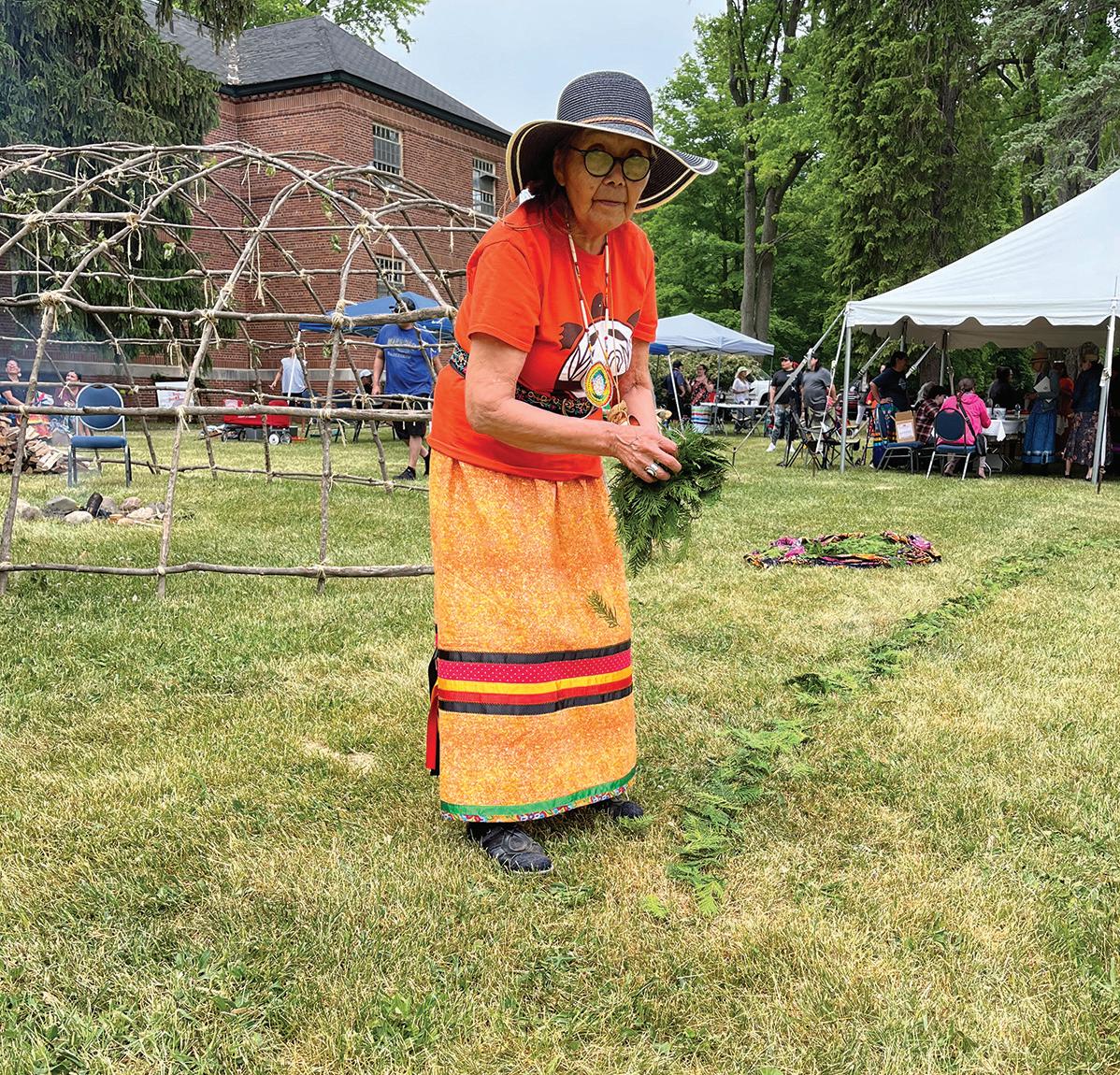
But on Aug. 11, 2022, the Native American Rights Fund noted that “the federal government and many state governments have never apologized for the use of Indian boarding schools to terminate the cultures, religions, and languages of Indigenous people.”
When Haaland held a “Road to Healing” public hearing in Pellston, Michigan, on Aug. 13, 2022, 22 people commented, including Skutt, Wakefield, Cobe and Fyke.
Jamie Stuck, chairperson of the Nottawaseppi Huron Band of Potawatomi and president of the United Tribes of Michigan, expressed gratitude to Haaland for “bringing awareness to this issue.” But he added, “The event felt impersonal” and could have been improved if Haaland had encouraged “collective dialogue” with tribal leaders “to discuss next steps and solutions for the survivors, descendants and impacted communities.”

Almost a year later, in May 2023, Sen. Elizabeth Warren (D-Mass.) introduced Senate Bill 1723, the Truth and Healing Commission on Indian Boarding School Policies Act. That bill is still under consideration by the Senate Committee on Indian Affairs.
At the Honoring, Healing and Remembering event, the emcee announces that the crowd has grown to 550 people. They are congregated on the large lawn in front of what was the boarding school's main building. The survivors have spoken of
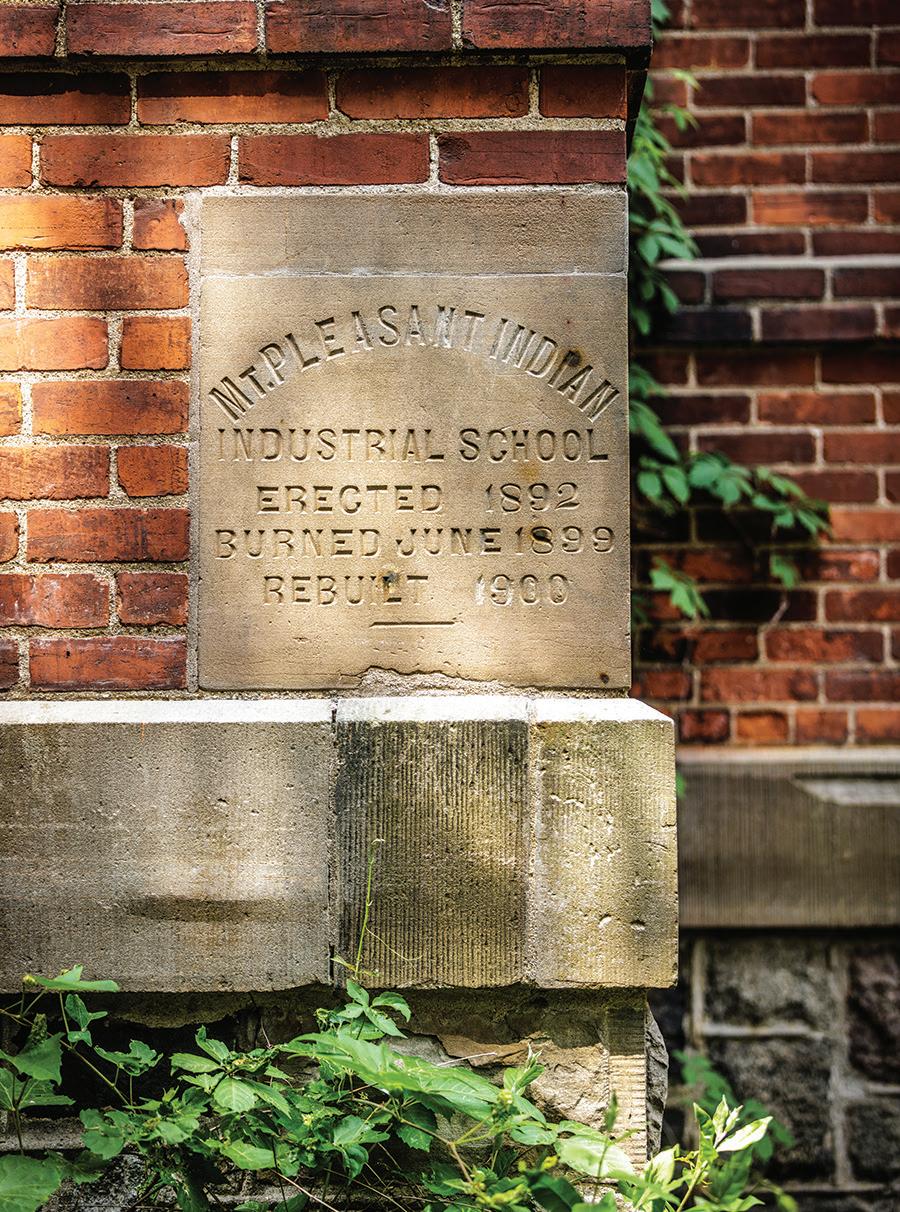
the cruelty they experienced. Now it is time to honor and heal.
For the grand entry, dozens of people parade in a line extending several hundred yards. Many carry a placard bearing the name of a student who died while attending this boarding school. Some carry eagle healing staffs or tribal flags. Some wear caps with the embroidered words “Native Veteran.” One carries a Vietnam War POW/MIA flag.
“The tribal nation flags precede the United States flag,” says an announcement over the
public address system. It is a reminder that this is a ceremony on tribal land, hosted by Indigenous people who were here long before the European colonists and the U.S. government.
Later, with all attendees observing, two men and two women come to a central point on the lawn. One is Paul Joseph Walker, a member of the Ogitchedaw Warrior Society, a veterans' organization within the Saginaw Chippewa tribe. Walker is bestowed with a new eagle healing staff with a crimson banner bearing the names of the 227 children who died here. He pledges to help the tribes spiritually connect with these children, a healing endeavor for all.
Amid an eerie quiet, a man and a woman read the names of each deceased child. Only three sounds are heard: the solemn male voice, the solemn female voice, and the reverberation from a single beat of a tom-tom.
During a later presentation, a speaker tells the crowd of plans by the Saginaw Chippewa to convert this former boarding school into a cultural center for both the tribe and the community, in hopes of giving current and future generations the opportunity to reclaim pieces of identity that were lost when relatives and ancestors attended the school.
Four women lay cedar leaves in a narrow line to form a circle on the ceremonial lawn, which will soon be occupied by a dozen Native American women performing the Jingle Dance.
“The Jingle Dance (is) the dance of healing grief, sadness and hurts. This healing medicine is the activation of all the goodness you inherited and carry through your DNA,” a woman emcee tells the crowd. “The celebration will bring that forward for you to walk more confidently, to walk with purpose and intention, to confront and to deal with your multi-generational trauma and the trauma our survivors endured.”
The dancers take evenly spaced positions within the circle. Drummers drum. The dancers dance. The 365 jingle cones on each dress come alive with sound.
“The jingle cones carry the sound of healing water, of ice crystals," the emcee says. "If you close your eyes, that sound goes right through you. It will go to those places that you are needing healing.”
When the dancers finish, those on the outside of the circle accept the invitation to step over the cedar leaves, enter the circle, and dance to the beat of the tom-tom.
“Dance with joy. Dance hard. Dance," says the emcee. "When you dance, your body is accepting the medicine you have received, and you’re sending it through every cell in your body.”
She concludes, “We are strong. We are resilient people. We will restore ourselves. This is where this happens.”

Unlike his studio partners Aimee Tye and Angi Polderman, who were both classically trained in ballet beginning in their youth, Eugene Chua was not interested in dance as a child.
His first exposure to it was seeing a Russian ballet during a family trip to Lincoln Center, in New York City, when he was a boy. “I fell asleep,” he says.
Now he is a co-owner of Tye Chua Dance, a ballet studio in downtown Kalamazoo.
Growing up, Chua was interested in sports, especially tennis. As a young man, his educational focus was plasma physics, a subject in which he earned his bachelor’s and master’s degrees. Everything pointed in a direction other than dance.
“In sports, though, when I was young, at some point I noticed that everyone was getting taller than me,” Chua says. “Someone in my fraternity at MIT (Massachussetts Institute of Technology), in Boston, suggested I try dance instead.”
At 19, Chua signed up for a modern dance class and found he enjoyed it. The second dance class he took was ballet, but it was a discouraging experience. “I was terrible, but I could outjump anyone,” recalls Chua.
His instructor, David Shields, a former soloist with Sadler's Wells Royal Ballet, encouraged him to take another class, and something clicked. Chua’s dance skills improved, and he excelled. Chua was accepted into the Boston Ballet and the Connecticut Ballet, and later the Omaha Ballet as a principal dancer. He also taught master classes and workshops nationwide and overseas.
Unlike her business partner, Aimee Tye loved dance from early childhood days.
“My sister and I would wear matching underwear sets and put on performances in the living room as kids,” Tye says. “She is now a choreographer, while I fell in and out of love with dance. It is something that requires a lot of practice, and there were times that I felt like I was missing out on a normal life because I had to practice.”
But Tye decided the sacrifices were worthwhile, and she began her formal training with the Kalamazoo Ballet and continued with Canada’s Royal Winnipeg Ballet. She also danced with the Detroit Metropolitan Dance Theatre. For 19 years, she was associate director and faculty member at the Hyde Park School of Dance, in Chicago, before returning to Kalamazoo.
Angi Polderman, who grew up in Mattawan, began training in ballet at age 11 at the Bullard School, in Kalamazoo, then danced with the affiliated Kalamazoo Ballet, where she became a principal dancer. She continued her training at the University of Michigan, but then moved to Maine, where she danced with the Portland Ballet. In Maine, she also taught dance to young skiers and snowboarders at the Carrabassett Valley Academy.
"Yes, athletes should learn how to dance,” Polderman says. “... You don’t have to dance so that your leg is up by your ear, just learn how to maintain balance and flexibility.”
Next, Polderman danced with the Miami City Ballet, but she finally came full circle, returning to Kalamazoo and the Kalamazoo Ballet.
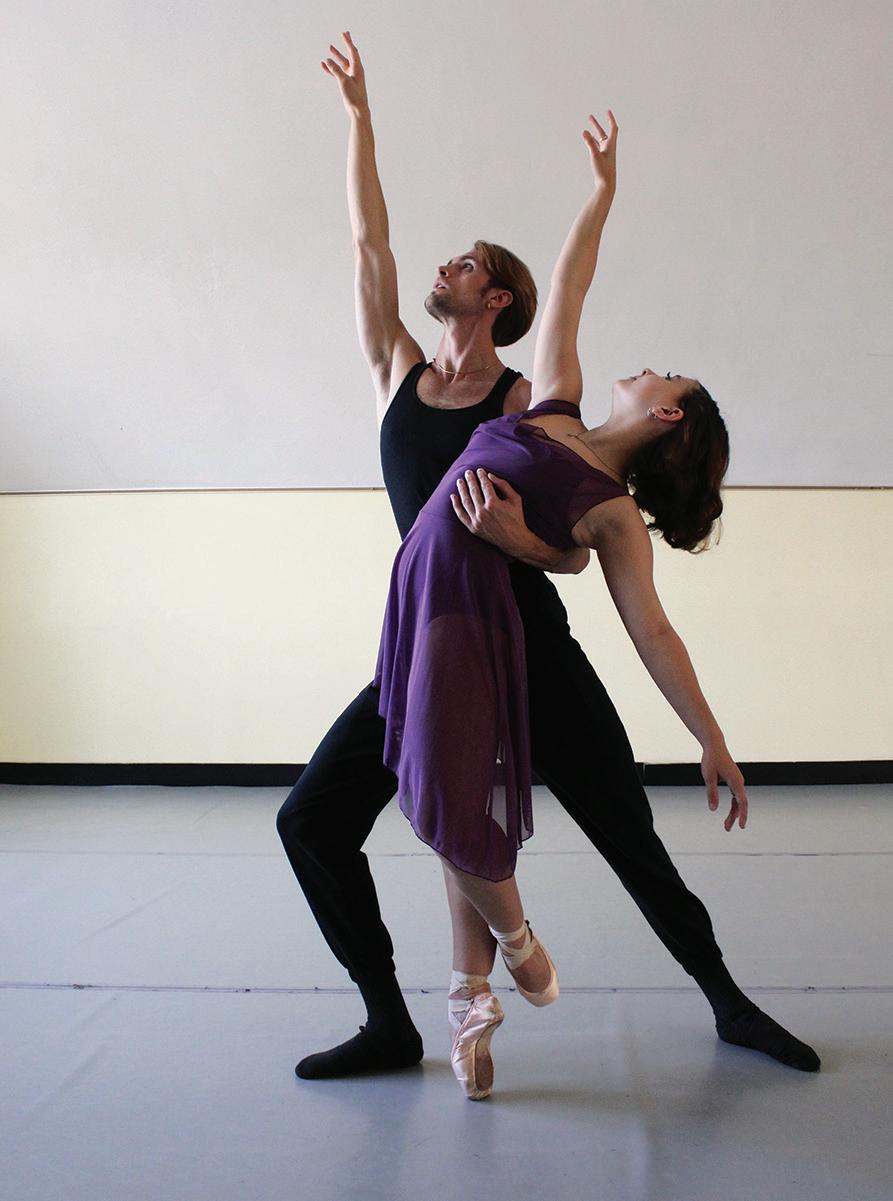


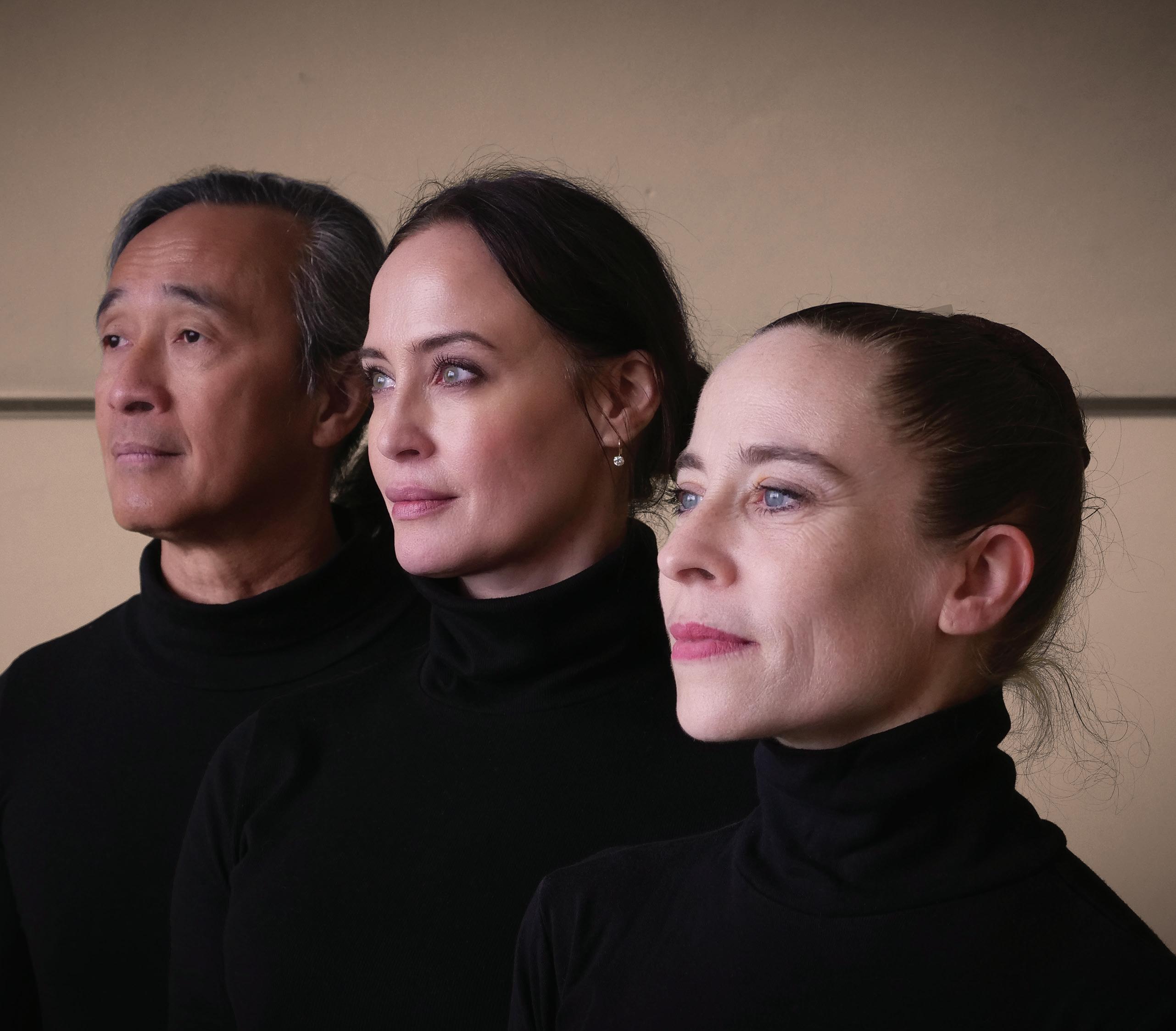
AN EDUCATION IS SOMETHING THAT CAN NEVER BE TAKEN AWAY, AND KNOWLEDGE IS EMPOWERING IF UTILIZED
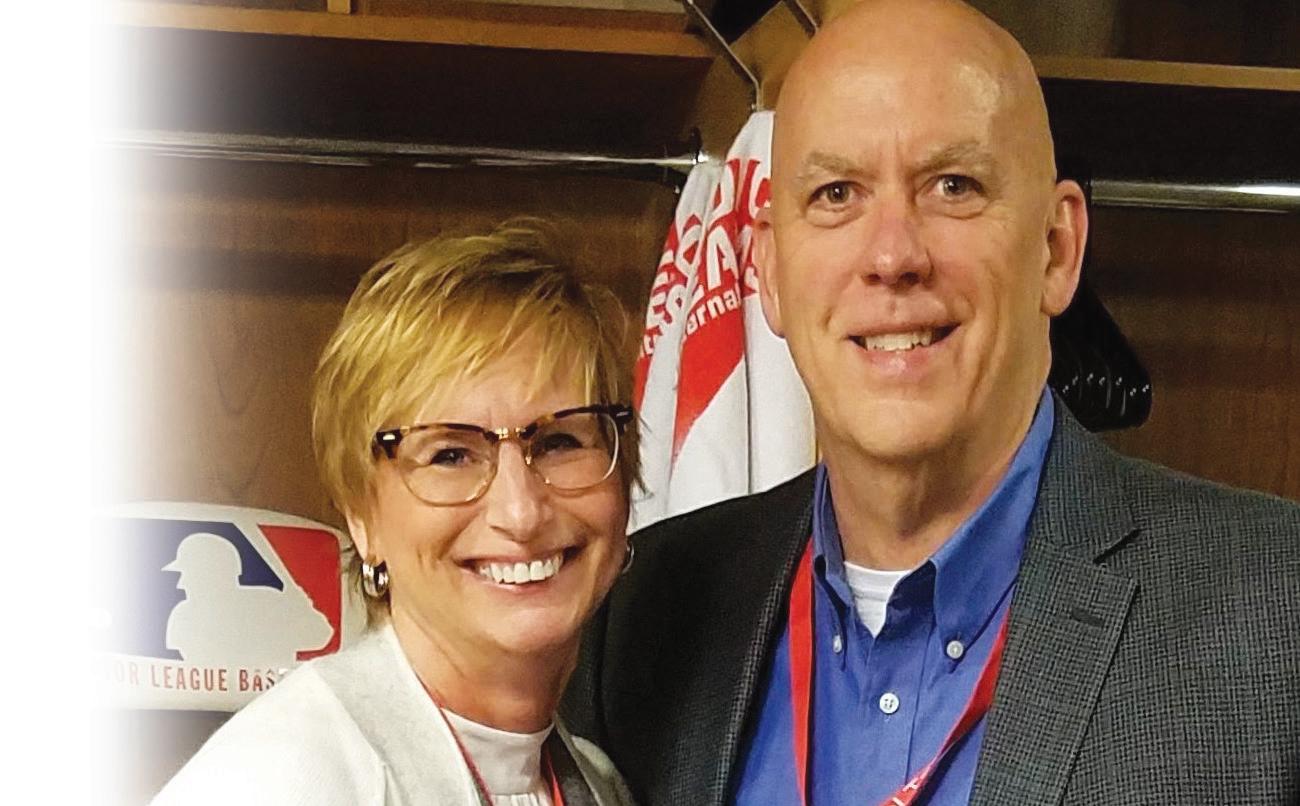
www.kvcc.edu/foundation
www.kvcc.edu/foundation









Your gifts to the Kalamazoo Valley Community College Foundation continue to make a difference.
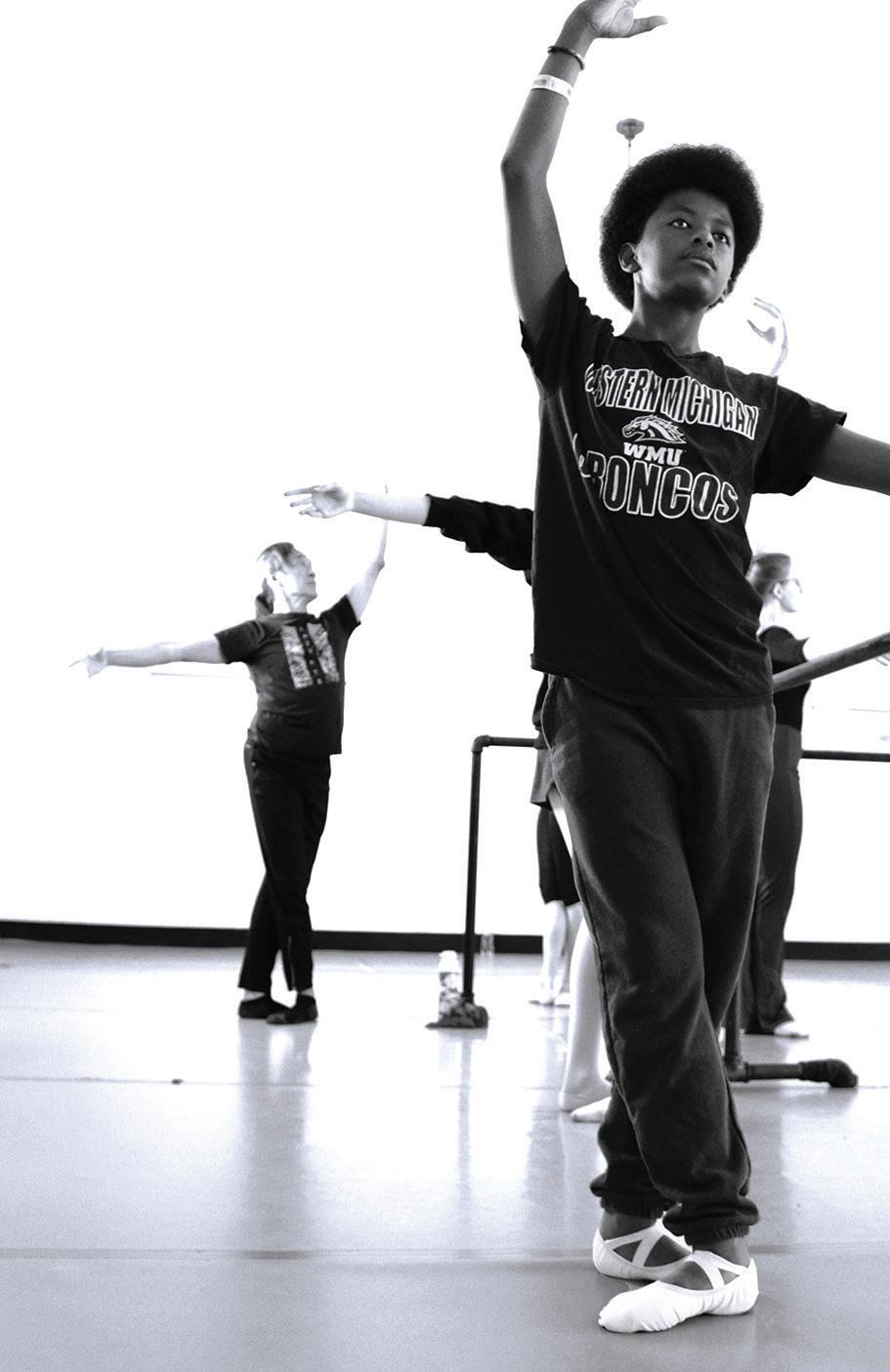
In a year where we all learned to navigate a new normal, we are ever more grateful for our dedicated supporters. Together we make life-changing dreams come true on a daily basis.
Polderman was dancing and teaching with the Kalamazoo Ballet when Tye and Chua returned to Kalamazoo to be closer to family. Therese Bullard was then the longtime owner and director of the Kalamazoo Ballet and Bullard School. Tye and Chua worked with Bullard to take over ownership of the Bullard School in 2017 and renamed it Tye Chua Dance. The two co-owners and Polderman now serve as artistic directors of the studio.
The studio's location — on the fourth floor of the Kalamazoo Nonprofit Advocacy Coalition building (First Baptist Church), 315 W. Michigan Ave., in rooms with stained glass windows and hardwood floors — is distinctive, but its philosophy of dance is what makes it unique.
Dancers are accepted from ages 3 to 80, whenever someone feels moved to learn ballet, the trio says. Scholarships are based on financial need, artistic ability, student commitment and availability. And the qualities of kindness, inclusion, discipline and leadership are required.
“Our students include school-aged dancers, adult recreational dancers, retired
professional dancers who live in the area, current professionals from the area who take class while in town, students from the universities, other local dance instructors and professors of dance from the universities,” Polderman says. “We've even had touring Broadway performers take class while in town. As you can imagine, these students range from the purely recreational dancer to the professional level.”

The Tye Chua philosophy also eliminates ranking, something that many ballet studios do, ranking dancers at different levels of achievement, from corps to principal. What can be a competitive environment for dancers is replaced with an "atmosphere of a supportive community," says Tye.
“We attract different thinkers to dance, since we are very welcoming,” she says. “For instance, dancers with ADHD do very well here. We see a lot of progress, increased attention spans. We even have emotionalsupport animals here.”
“This is a place where you can think only about yourself, your own body and emotions in time and space,” Polderman adds.
In addition to ballet, Tye Chua Dance offers small classes of 8 to 10 students in modern and contemporary dance, character and national dance and jazz, with French and Italian ballet terminology. There are currently about 100 students enrolled. The studio has six faculty members.
Students also learn anatomy to prepare them for pointe work. When a dancer is en pointe, they must support all of their weight on fully extended feet — which requires special ballet shoes constructed from layers of fabric and glue, with a leather block under the toes.
“Dancing en pointe is almost like walking on stilts,” Chua says. “If you’ve never danced en pointe, it can be very difficult. If you do it too early, you can build the wrong muscles. We have had to retrain older dancers on how to do it correctly or it sets you back.”
“It’s a big step for dancers,” Polderman says, “Kids are eager to do it and then instantly regretful when they try.”
“It can be risky if you are not properly prepared,” Tye says. “We don’t want children doing it while their bones are growing, and we’ve never had any injuries here.”
Four shows a year
Tye Chua dancers present four shows each year, beginning in February, when they perform a choreography showcase featuring their own works as well as pieces by faculty and guest artists.
In the spring, dancers perform a story ballet. The studio's upcoming show, Wild Things, is based on the book, Where the Wild Things Are, by Maurice Sendak, and will take place May 4 and 5.
In August, dancers perform in a show called Summerdance, and in December there's an annual presentation of The Nutcracker.
All shows take place at the Kalamazoo Nonprofit Advocacy Coalition building.
To learn more, visit tyechuadance.com.

May 3–19
The Civic Theatre

A musical drama about a con man who posed as a lawyer, doctor and pilot will land on the Civic stage this month.
Ian Cummisford has the lead role of Frank Abagnale Jr., a teenager who runs away from home and finds adventure assuming a multitude of identities, while Mitch Voss plays FBI agent Carl Hanratty, who is determined to bring Abagnale in.
Show times are 7:30 p.m. May 3, 4, 10, 11, 17 and 18 and 2 p.m. May 5, 12 and 19 at the Civic Auditorium, 329 S. Park St. Tickets are $17–$30 and can be purchased by calling the Civic box office at 343-1313 or online at kazoocivic.com.

May 16–19
Festival Playhouse
This play explores the adventures and pitfalls that occur when a teenage social outcast enlists a tiny supercomputer called "The Squip” to make him popular and cool.
The Kalamazoo College Festival Playhouse production is directed by Quincy Thomas. It is based on the 2004 novel of the same name by Ned Vizzini and features music and lyrics by Joe Iconis.
Show times are 7:30 p.m. May 16–18 and 2 p.m. May 19 at Kalamazoo College's Balch Playhouse, 129 Thompson St. Tickets are $5–$25 and available by calling the box office at 337-7333 or online at festivalplayhouse.kzoo.edu.
May 17–26
WMU Theatre

Western Michigan University student actors will bring Shakespeare's political thriller about the Roman dictator Julius Caesar to the stage this month.
The play tells the story of the conspiracy against Caesar, his assassination and the defeat of his conspirators. It will be performed in the York Arena Theatre, on WMU's campus.
Show times are 7:30 p.m. May 17 and 24 and 2 p.m. May 19 and 26. Tickets are $7–$21 and available by calling the box office at 387-6222 or online at wmich.edu/theatre.
May 10–19
Queer Theatre Kalamazoo

This musical, which combines botany with family drama while exploring the duality of nature versus nurture, will be performed at Crawlspace Comedy Theatre, 315 W. Michigan Ave.
It weaves plant-based themes into its story of how two business-owning families, each rooted in prejudice, change their views when their queer kids start rooting for one another.
Show times are 7:30 p.m. May 10, 11, 16, 17 and 18 and 2 p.m. May 11 and 19. Tickets are on a name-your-price basis and available at queertk.org.

May 16
All Ears Theatre
See what audio theater magic can be created in just 72 hours at this new play festival.
Four 10-minute plays will be performed in this free production. Writers are given guidelines, genres and a must-use line on May 16, directors get scripts and a cast on May 17, and the final productions will be presented at 6 p.m. May 18 at the Kalamazoo Nonprofit Advocacy Coalition, 315 W. Michigan Ave. For more information, visit allearstheatre.org.
Ongoing Productions
John & Abigail: An American Love Story , May 3–11, New Vic Theatre
Sondheim on Sondheim , May 2–12, Farmers Alley Theatre


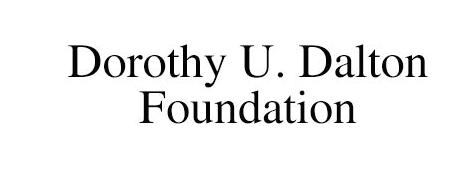
May 17–19

The spring performance of Wellspring/Cori Terry & Dancers will feature of collaboration of choreographers, dancers and musicians.
The program, to be performed in the Wellspring Theater, 359 S. Kalamazoo Mall, Suite 204, will include pieces by Wellspring choreographers Cori Terry, Marisa Bianan and Angel Sutton and composers and musicians
Carolyn Koebel, Cori Somers and Laurie Jarski.
Showtimes are 8 p.m. May 17 and 18, and 2 p.m. May 19. Tickets can be purchased at wellspringdance.org or by calling 342-4354.
Throughout the month
Various venues
Several youth dance ensembles will perform during May:

• Wild Things will be performed by Tye Chua Dance at 2 and 5 p.m. May 4 and 4 p.m. May 5 in the KNAC Theater, 315 W. Michigan Ave. Tickets are $5–$15 and available at tyechuadance.com.
• A Youth Dance Showcase, featuring youth dancers from Wellspring Dance Academy's Youth Performing Ensemble, Boys & Girls Clubs of Greater Kalamazoo, Kalamazoo Chinese Academy, and El Concilio's Danza Folklorica, will be presented at 1p.m. May 11 in the Wellspring Theater, 359 S. Kalamazoo Mall. Tickets are donation-based. For more information, visit wellspringdance.org.
• Cinderella , performed by the dancers of Ballet Kalamazoo and guest artist Joseph VanHarn, will be presented at 6 p.m. May 18 and 2 p.m. May 19 at Comstock Community Auditorium, 2107 N. 26th St. For ticket prices, visit balletkalamazoo.com.
Various venues
Several authors will give in-person presentations this month:
• Mark Nepo, local poet, philosopher and author of 25 books, will speak at 2 p.m. May 6 at the Kalamazoo Public Library. He will discuss his 2019 work Drinking from the River of Light: The Life of Expression and how the lifelong process of listening, reflecting and bearing witness to the truth of living reveals the mysteries of life.
• Ghassan Zeineddine, Arab-American author of the story collection Dearborn, will be on hand for two programs on May 11 at the Kalamazoo Public Library's Oshtemo Branch. Zeineddine will give a creative writing workshop from 10:30 a.m.–noon, with registration at kpl.gov required to attend. At 2 p.m., the program Stories & Songs of Dearborn will pair music by the The Bahar Ensemble of the Kalamazoo Symphony Orchestra with Zeineddine giving readings from his stories.
• Janie Paul, author of Making Art in Prison: Survival & Resistance, will talk at 6 p.m. May 28 at Richland Community Library, 8951 Park St. She will talk about the culture of prison art communities and share stories from her 27 years curating the annual Exhibition of Artists in Michigan Prisons. For more information, visit richlandlibrary.org.


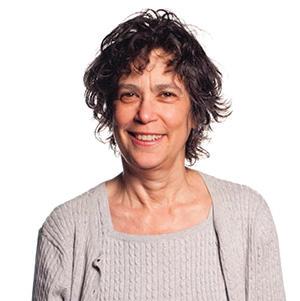


Through May 12
Various venues

The festival, which began on April 24, continues this month with performances by such Internationally renowned artists as Nduduzo Makhathini, Gabriela Montero, Paul Lewis, Pink Martini, Patti LuPone, Yuja Wang & Kirill Gerstein. Ticket prices vary for performances. Visit thegilmore.org for the full schedule and ticket information.
In addition, the festival will screen a piano-themed film series at the Kalamazoo Valley Museum. Silenced: Composers in Revolutionary Russia will be shown at noon May 2, Through the Eyes of Yuga: A Road Movie at noon May 3, and Warsaw Is My Name at 2 p.m. May 7. For more information, visit kalamazoomuseum.org.
Various venues
Throughout the month
May is a busy month for local choral groups:
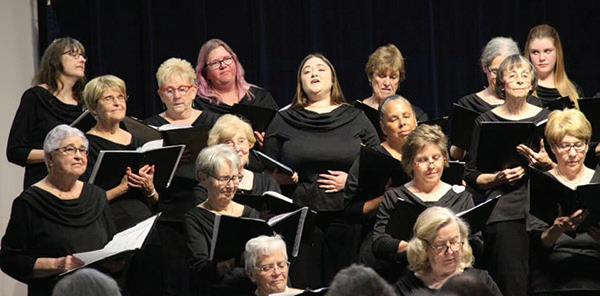
• Dreams , a concert by the all-female Kalamazoo Community Chorale, is set for 3 p.m. May 5 at First United Methodist Church, 212 S. Park St. The performance is free.
• A Vigil Against Violence, in which Sergei Rachmaninoff's Vespers will be performed by Kalamazoo Choral Arts and Kalamazoo Central High School’s Hawthorn Singers, is set for 7:30 p.m. May 21 at First United Methodist Church. Tickets are $5–$19 and available online at kalamazoochoralarts.org.
• Broadway with Blendings , featuring songs from a variety of Broadway shows performed by the Blendings Vocal Ensemble and a live jazz trio, will be presented at 7:30 p.m. May 29 at the Kalamazoo Civic Theater, 329 S. Park St. Tickets are $15 and available from ensemble members or at the door.
May 15
Fontana Chamber Arts
The winners of Fontana's annual competition for local music students will present a free recital at 7 p.m. in the Epic Center's Jolliffe Theatre, 359 S. Kalamazoo Mall.

Similar in format to NPR’s From the Top, program, Bravo! celebrates the talents of area student musicians who audition in front of a panel of professional musicians.
For more information, visit fontanamusic.org.
May 17–18
Various venues
There will be several opportunities to be part of the action when some of the globe's most talented youth string musicians come to town for this competition.
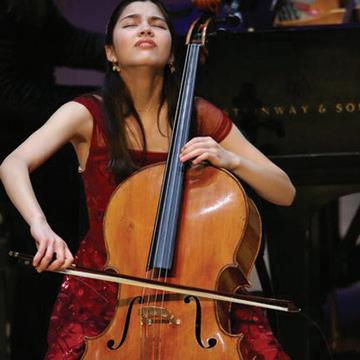
The public can be part of the audience at these events:
• Master classes, 3–6 p.m. May 17 at Western Michigan University’s Dalton Center; admission is free.
• Bach Prize Award Night, when the 12 Stulberg finalists play solo Bach pieces for prizes, 7:30–10 p.m. May 17 at WMU’s Dalton Center Recital Hall; tickets are $15, or $5 for students.
• Competition Semifinals & Finals, when the 12 semifinalists compete for the top prizes. The semifinals are 9 a.m.–noon & 1–4 p.m. May 18, and the finals are 7:30 p.m. May 18 at Dalton Center Recital Hall. Admission to the semifinals is free, and tickets for the finals are $25, or $5 for students and $35 for a combo ticket to the finals and the Bach Prize. For more information or to purchase tickets, visit stulberg.org.
May 18
Kalamazoo Ringers
The 17-member bell choir will perform on seven octaves of handbells and six octaves of choir chimes in this concert featuring musical selections that revolve around the idea of peace throughout the world.
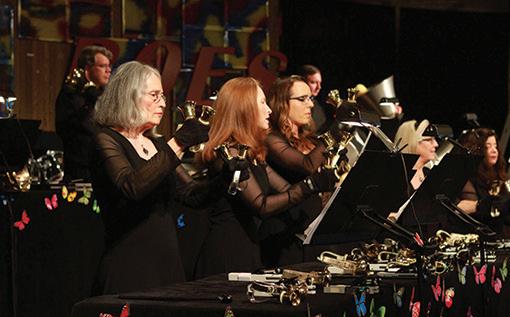
The show begins at 7 p.m. at First United Methodist Church, 212 S. Park St. The performance is free, but a free-will offering will be taken at intermission. For more information, visitkalamazooringers.org.information.

May 18
Brass Band of Battle Creek
Boston-based singer Lydia Harrell will be a guest performer when the Brass Band performs selections of flight-based music in honor of Battle Creek Executive Airport’s 100th anniversary.
The show will be at 7:30 p.m. in Kellogg Auditorium, 50 W. Van Buren St., Battle Creek, and tickets are $25–$65. For more information, visit bbbc.net.
May 19
Kalamazoo
Philharmonia

For this opera production, the Kalamazoo College-based community symphony will be joined by members of the West Michigan Opera Project, an organization promoting opera workshops and performance opportunities.
Composer Georges Bizet's Carmen tells the story of the downfall of Don José, a naïve soldier who is seduced by the wiles of the fiery gypsy Carmen.
Carmen will be performed at 3 p.m. at First United Methodist Church, 212 S. Park St. Tickets are $3–$7 and will be available at the door. For more information, visit philharmonia.kzoo.edu.

May 22
Kalamazoo Symphony Orchestra
A selection of influential American popular songs and jazz standards from the early 20th century will be performed by KSO musicians at 7 p.m. at Bell’s Eccentric Cafe, 355 E. Kalamazoo Ave.
The performance is part of the symphony's Craft Music series, which pairs craft beer with music performed by an ensemble of KSO artists in residence. Tickets are $5–$30 and available online kalamazoosymphony.org.
Opening this month
Kalamazoo Institute of Arts
Three new exhibitions will open this month at the Kalamazoo Institute of Arts:
The West Michigan Area Show, with more than 300 works by artists from 14 counties of Western Michigan, May 3–Aug. 25. A reception where award winners will be announced will be held at 6 p.m. May 2.

ClearlyIndigenous:NativeVisionsReimaginedinGlass , featuring 120 pieces of glass art created by contemporary Native American and Indigenous Pacific-Rim artists, May 18–Aug.18. In addition to the regular admission fee, there will be an additional cost of $8 for adults and $5 for youths, students, and senior citizens to view this exhibit.
The Anniversary Gift: Promised Gifts from the Collection of Joy&TimothyLight , a selection of Chinese and Japanese artworks on paper that are promised gifts to the KIA from the local collectors Joy and Timothy Light, May 25–Sept. 1. For information, visit the kiarts.org.

May 3
Various venues
With spring bringing urges to be outdoors, May's Art Hop will focus on the area's vibrant public art and the nature that surrounds it.
Art Hop stops and a tour led by Lynn Houghton will offer opportunities to view outdoor murals, sculptures, and installations.
This free event, organized by the Arts Council of Greater Kalamazoo, runs from 5–8 p.m. More information can be found at kalamazooarthop.org.
• Kyungmi Shin: A Story to Finding Us , through May 12, Kalamazoo Institute of Arts
• The Art of Playing with Knowledge: Works by Angela Lorenz , through May 24, Kalamazoo Book Arts Center
• Westminster Art Festival: Grounded , through June 13, Westminster Presbyterian Church
Bluey’s Big Play — A live show based on the children’s TV series, 6 p.m. May 2, Miller Auditorium, millerauditorium.com.
John&Abigail:AnAmericanLoveStory— The historical romance of John Adams & Abigail Smith, 8 p.m. May 3–4 & 10–11, New Vic Theatre, 134 E. Vine St., thenewvictheatre.org.
GoldenGirls:TheLaughsContinue — A comedy that gives an adult twist to the sassy TV series, 7:30 p.m. May 7, Miller Auditorium, millerauditorium.com.
Be More Chill — A teen finds “The Squip,” a tiny supercomputer that promises to bring him everything he desires most, 7:30 p.m. May 16–18, 2 p.m. May 19, Kalamazoo College's Balch Playhouse, 129 Thompson St., festivalplayhouse. kzoo.edu.
Julius Caesar — The conspiracy against Caesar, his assassination & the defeat of his conspirators, 7:30 p.m. May 17 & 24, 2 p.m. May 19 & 26, York Theatre, WMU, 387–6222, wmich.edu/theatre.
Sondheim on Sondheim — A portrait of the famed songwriter in his own words & with his music, with interview footage, 7 p.m. May 2–4 & 9–11, 2 p.m. May 5 & 12, Farmers Alley Theatre, 221 Farmers Alley, 343-2727, farmersalleytheatre.com.
Catch Me If You Can— A musical comedy about chasing your dreams & not getting caught, 7:30 p.m. May 3–4, 10–11, & 17–18, 2 p.m. May 5, 12 & 19, Civic Auditorium, 329 S. Park St., 343-1313, kazoocivic.com.
Annie — The beloved musical about a redhaired orphan, 7 p.m. May 6, Miller Auditorium, millerauditorium.com.
Turnover: A New Leaf — A musical about the transformation of two neighboring businesses, a queer nightclub & an immigrant-familyowned beauty salon, presented by Queer Theatre Kalamazoo, 7:30 p.m. May 10, 11, 16, 17, & 18, 2 p.m. May 11 & 19, Crawlspace Comedy Theatre, 315 W. Michigan Ave., queertk.org.
Other
72-Hour Play Festival — Four 10-minute audio plays written, cast and produced in 72 hours, 6 p.m. May 18, Kalamazoo Nonprofit Advocacy Coalition, 315 W. Michigan Ave., allearstheatre.org.
Student Dance Concert — Youth & adult class performances, 1–3 p.m. May 5, Wellspring
Theater, 359 S. Kalamazoo Mall, Suite 204, wellspringdance.org.
Youth Dance Showcase — Youth dancers from Wellspring, Boys & Girls Club, Kalamazoo Chinese Academy, El Concilio's Danza Folklorica & more will perform, 1–2 p.m. May 11, Wellspring Theatre, wellspringdance.org.
Tendrils — Presented by Wellspring Cori Terry & Dancers, May 17–19, Wellspring Theater, wellspringdance.org, 342-4354.
Cinderella — Presented by Ballet Kalamazoo, 6–8 p.m. May 18, 2–4 p.m. May 19, Comstock Community Auditorium, 2107 N. 26th St., balletkalamazoo.com.
Bands & Solo Artists
Bell’s Eccentric Café Concerts — Gerald Clayton Trio, 6 & 9 p.m. May 2; John R. Miller, 8 p.m. May 3; Beaton, MacGillivray, & MacNeil: A Cape Breton Trio, 7 p.m. May 4; Baby Grands: A Cape Breton Trio family concert, 11 a.m. May 5; Delvon Lamarr Organ Trio, 4 & 7 p.m. May 5; Belle & Sebastian w/Haley Heynderickx, 8 p.m. May 6; Eric Gales, 8 p.m. May 9; Satsang w/Tim Snider, 8 p.m. May 11; Southern Culture on the Skids, 8 p.m. May 12; The Messthetics & James Brandon Lewis w/Andrew Rathbun Trio, 8 p.m. May 13; Jeffrey Martin & Dean Johnson, 8 p.m. May 14; Ghost-Note, 8 p.m. May 15; Drink Their Blood w/Ripvanripper, Flood the Desert, Bronson Arm, 8 p.m. May 18; KSO Craft Music: Great American Songbook, 7 p.m. May 22; Just Jaye, a fundraising concert for Sounds of the Zoo music festival, 7 p.m. May 23; '90s Night, featuring Lighting Matches and The Band Cordero, 8 p.m. May 24; Electric Six w/Supersuckers and Volk, 8 p.m. May 25; 355 E. Kalamazoo Ave., 382–2332, bellsbeer.com.
State on the Street — A Cape Brenton Trio, with seating starting at 5:30 p.m. & music at 6 p.m. May 3, outside the State Theatre, 404 S. Burdick St., kazoostate.com.
Judas Priest — Performing with Sabaton, 7 p.m. May 4, Wings Event Center, 3600 Vanrick Drive, wingseventcenter.com/events.
Rain: A Tribute to the Beatles — 7:30 p.m. May 14, Miller Auditorium, millerauditorium.com.
Burg Days of Summer — Live music, food trucks & activities including a cupcake-eating contest, 3–8:30 p.m. May 18, Main & Prairie streets, downtown Vicksburg, vicksburgmi.org.
Gun Lake Live Summer Series Kickoff — With Brena, 6–10 p.m. May 22, Lakefront Pavilion, Bay Pointe Inn, 11456 Marsh Road, Shelbyville, 888–486–5253.
Orchestra, Chamber, Jazz, Vocal & More
Gilmore International Piano Festival — Featuring world-class musicians celebrating piano repertoire, through May 12, various locations; see thegilmore.org for full schedule.
An Intimate Evening with David Foster & Katharine McPhee — Musician, composer & director David Foster performs with singer Katharine McPhee, 7:30 p.m. May 3, Miller Auditorium, millerauditorium.com.
When Dreams Take Flight — Kalamazoo Community Chorale performs, 3 p.m. May 5, First United Methodist Church, 212 S. Park St., kalamazoocommunitychorale.com.
Kalamazoo College’s Jazz Band — 7:30 p.m. May 10, Dalton Theatre, Kalamazoo College, music.kzoo. edu/events.
Pink Martini w/China Forbes — A performance of jazz, classical, Latin & pop, 8 p.m. May 10, Miller Auditorium, millerauditorium.com.
Patti LuPone: A Life in Notes — LuPone presents a musical memoir, 4 p.m. May 12, Miller Auditorium, millerauditorium.com.
Stulberg International String Competition — Annual competition of young string musicians; Master classes, 3-6 p.m. May 17, Dalton Center; Bach Prize Award Night, 7:30 May 17; semifinals 9 a.m.–noon & 1–4 p.m. May 18; & finals 7:30 p.m. May 18, all in Dalton Center Recital Hall, WMU, stulberg.org.
TotheWorld:Peace— Kalamazoo Ringers perform on handbells & hand chimes, 7 p.m. May 18, First United Methodist Church, kalamazooringers.org
Brass Band of Battle Creek — Performing a flight-themed concert in honor of Battle Creek Airport’s 100th anniversary, 7:30 p.m. May 18, Kellogg Auditorium, 50 W. Van Buren St., Battle Creek, bbbc.net.
Crescendo Academy of Music Student Recital — 2–3 p.m. May 19, First Congregational Church, 345 W. Michigan Ave., 345-6664, crescendoacademy.com.
Carmen — Kalamazoo Philharmonia performs with the West Michigan Opera Project, 3 p.m. May 19, First United Methodist Church, philharmonia.kzoo.edu.
Kalamazoo Kids in Tune — An after-school orchestra, 7 p.m. May 21, Chenery Auditorium, 714 S. Westnedge Ave., kalamazoosymphony.com.
A Vigil Against Violence — Kalamazoo Choral Arts performs with Kalamazoo Central High School’s Hawthorn Singers, 7:30 p.m. May 21, First United Methodist Church, kalamazoochoralarts.org.
KSO Craft Music — Kalamazoo Symphony Orchestra musicians perform selections from the Great American Songbook, 7 p.m. May 22, Bell’s Eccentric Cafe, 355 E. Kalamazoo Ave., 382–2332, kalamazoosymphony.org.
Kalamazoo College Singers & Lux Esto Chamber Ensemble — 7:30 p.m. May 30, Dalton Theatre Lobby, Kalamazoo College, music.kzoo.edu/ events.
The Nerd — A comedy by American playwright Larry Shue, 7–9:30 p.m. May 3, Dormouse Theatre, 1030 Portage, dormousetheatre.com.
Crawlspace Improv Comedy Shows — Aaron James Wright, song-based improv, May 3; Slaptail Nation: Slap Your Tail Comedy, May 4; Early Bird Comedy Open Mic, May 6; Canned Champagne, May 10; Blunder Bus, May 11; Improv Family Show, 1–2 p.m. May 18; Riddled with English, May 18; Crawlspace Eviction, May 24 & 25; Joyce II Men, May 31; all shows except Improv Family Show are at 7:30 p.m., Crawlspace Comedy Theatre, 315 W. Michigan Ave., crawlspacecomedy.com.
FILM Events
The Gilmore Film Series 2024 about the piano & the passion, music & people it inspires: Russia, noon May 2; A Road Movie
2 p.m. May 7; Kalamazoo Valley Museum, 230 N. Rose St., 373-7990, kalamazoomuseum.org.
VISUAL ARTS
Kalamazoo Institute of Arts 314 S. Park St., 349-7775, kiarts.org
Exhibitions
KyungmiShin:AStorytoFindingUs works from the KIA’s Chinese ceramics collection & original works by Shin, through May 12.
West Michigan Area Show of more than 300 works by area visual artists, May 3–Aug. 18; reception and awards announcement 6 p.m. May 2.
ClearlyIndigenous:NativeVisionsReimagined in Glass — 120 pieces of glass works created by contemporary Native American and Indigenous Pacific-Rim artists, May 18–Aug. 25.
TheAnniversaryGift:PromisedGiftsfrom the Collection of Joy & Timothy Light and Japanese artworks on paper, May 25–Sept. 1.
Other Venues
Art Hop

outdoor public art and the beauty of nature, 5–8 p.m. May 3, various locations in downtown Kalamazoo, with a public art tour of murals, sculptures and installations led by Lynn Houghton, 342–5059, kalamazooarts.org.
Glass Blowers Battle 2024 competition, 2–11 p.m. May 3, 11 a.m.–6 p.m. May 4, Glass Art Kalamazoo, Suite 100, Park Trades Center, 326 W. Kalamazoo Ave., glassartkalamazoo.org.
The Art of Playing with Knowledge: Works by Angela Lorenz media art, through May 24, Kalamazoo Book Arts Center, 326 W. Kalamazoo Ave., Suite 103A, kalbookarts.org.
Westminster Art Festival: exhibition combining visual art & poetry, through June 13, Westminster Presbyterian Church, 1515 Helen Ave., Portage, westminsterartfestival.org.
LIBRARY & LITERARY EVENTS
Comstock Township Library 6130 King Highway, 345-0136, comstocklibrary.org
Family Game Night 4:30–8 p.m. every Wednesday.
Buck-a-Bag Book Sale for $1, May 1–11.
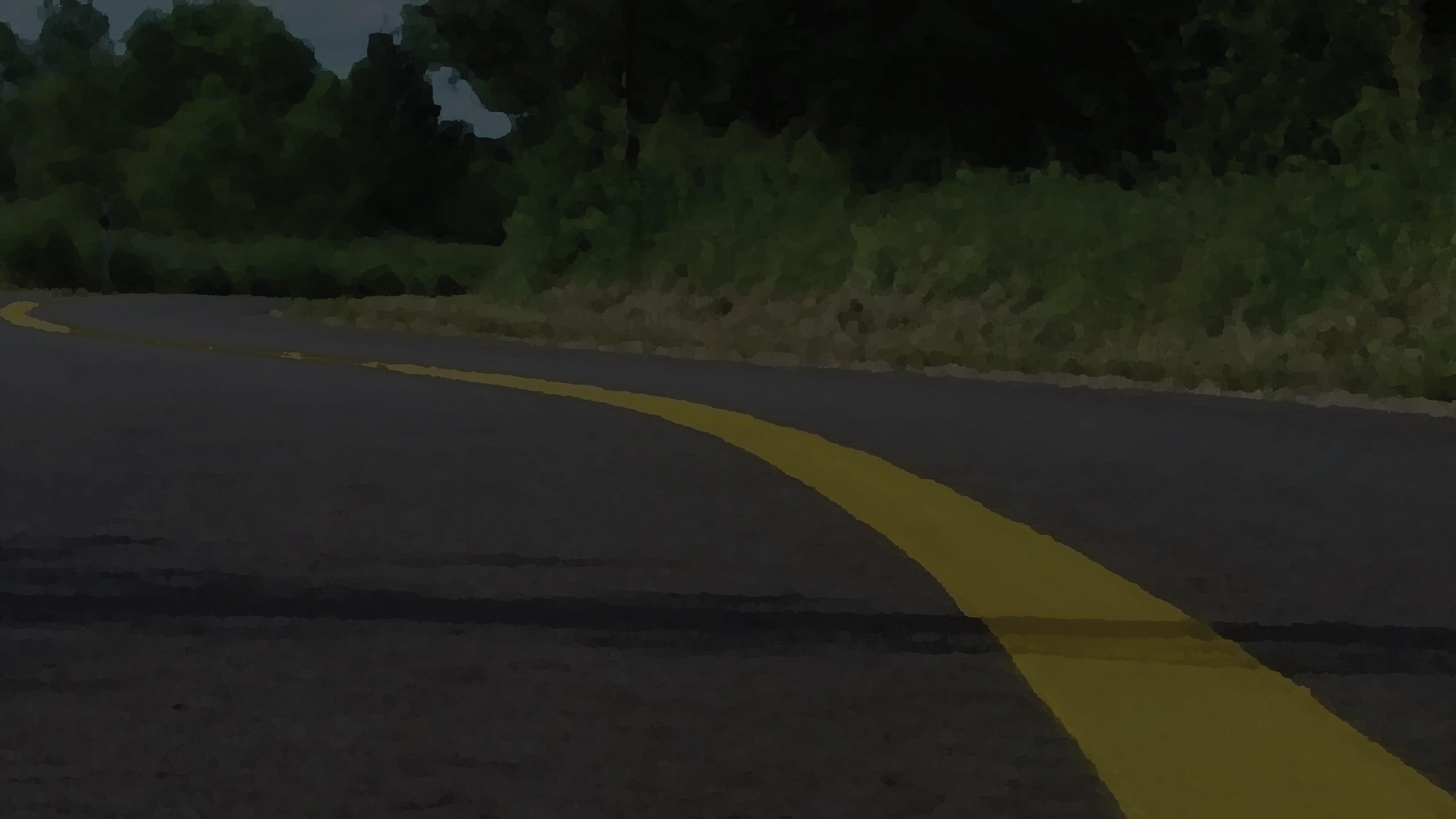
CTL Writers — Group discussion of writing, 2:30 p.m. May 7.
Adult Book Club — 1:30 p.m. May 9.
Adult Book Club — Discussion of Angeline Boulley’s Firekeeper’s Daughter, 6 p.m. May 30; registration required.


Dungeons & Dragons Game Night — From beginner to experienced levels, 5:30 p.m. May 9, Central Library; registration required.
Creative Writing with Ghassan Zeineddine — Visiting author leads a writers’ workshop, 10:30 a.m.–noon May 11, Oshtemo Branch, 7265 W. Main St.; registration required.
Stories & Songs of Dearborn — The KSO’s Bahar Ensemble paired with readings from Ghassan Zeineddine’s stories, 2–3 p.m. May 11, Oshtemo Branch.
Page Turners Book Club — Discussion of Angie Kim's Happiness Falls, 6:30 p.m. May 13, Oshtemo Branch & online; registration required.
Rose Street Poetry Club — Reading & writing of poetry, 9 a.m. May 14, Central Library.
Reading Race Group — Discussion of Heather McTeer’s Before the Streetlights Come On: Black America’s Urgent Call for Climate Solutions, cosponsored by SHARE & Antiracism Transformation Team, 6:30 p.m. May 14, SHARE Garden Atrium, 471 W. South St.
Washington Square Spring Celebration — With food, music, face painting, balloon animals & more, 5:30–7 p.m. May 15, Washington Square Branch, 1244 Portage St.
Classics Revisited — Discussion of Giuseppe Tomasi di Lampedusa’s The Leopard, 2:30–4 p.m. May 16, Central Library & online; registration required.
Researching Your African American/Native American Heritage — Explore the Native American ancestors on your African American family tree, 10:30 a.m.–12:30 p.m. May 18, Eastwood Branch; registration required.
Coffee & Connections — Chat with neighbors & library staff, with community resources & light refreshments provided, 9–11 a.m. May 20, Central Library.
Senior Citizens’ Breakfast — A hot breakfast & opportunity to ask health care questions, 10:30–noon May 24, Eastwood Branch.
Encounter Tai Chi — An introductory class on the movement-based martial art, 2–3 p.m. May 25, Oshtemo Branch; registration required.
Parchment Community Library 401 S. Riverview Drive, 343-7747, parchmentlibrary.org
Parchment Book Group – Discussion of Colleen Cambridge's Mastering the Art of French Murder, 6 p.m. May 13.
Silent Book Club — Bring a book & read in companionable silence, 5:15 p.m. May 20 & 1:15 p.m. May 22.
Mystery Book Club — Discussion of Cara Black's Murder in Bel-Air, 6:30 p.m. May 21.
Portage District Library 300 Library Lane, 329-4544, portagelibrary.info
Muffins & the Market — A discussion of recent stock market trends, 9 a.m. May 2 & 16.
The Basics of Investing with Options — Warren Fritz presents personal investment fundamentals, 10 a.m. May 2.
'70s Trivia — Play on your own or in a group, 6 p.m. May 2; registration required.
Kalamazoo County Historical Society — Speakers & discussion about local history, 7 p.m. May 6.
Summer Movie Preview — Watch & discuss previews of upcoming movies, 7 p.m. May 7.
International Mystery Book Club — Discussion of Eleanor Catton’s Birnam Wood, 7 p.m. May 9.
Documentary & Donuts — Viewing of Good Ol' Girl, about three Texas cowgirls carrying on their families' legacies, 10 a.m. May 10.
Introduction to Dungeons & Dragons for Adults — Both beginner & advanced tables, 6 p.m. May 14; registration required.
Cookies & Conversation: Heartwarming Reads Book Club — Discussion of Jenny Jackson’s Pineapple Street, 2 p.m. May 15.
The Mediterranean Way of Eating — Nutritionist Gretchen Kauth discusses the health benefits of the Mediterranean diet, 6 p.m. May 15. E-Bikes 101 — Information on terminology, variations & classes of e-bikes, 6 p.m. May 16.
Kalamazoo Valley Genealogical Society — Open to those interested in genealogy, 7 p.m. May 20.
Plots & Pages: A Local Writers Group — Author Mark Love discusses the craft of writing, 6 p.m. May 21.
Literacy Advocacy Orientation — An interactive presentation by the Kalamazoo Literacy Council, 6:30 p.m. May 23.
Estate Planning Presentation — By attorney Bill Wierenga, 5:30 p.m. May 29.
Seeking Spiritual Connectedness with the Plant Nation — Traditional forager Bethany Earl-Moody speaks at Kalamazoo Area Wild Ones' monthly program, 6:30 p.m. May 29.
Friends of the Library Book Sale — 9 a.m.–3 p.m. June 1; Friends of the Library members can shop 4–5:30 p.m. May 31.
Richland Community Library
8951 Park St., 629-9085, richlandlibrary.org
Bridge Club — Noon Tuesdays.
RCL Film Club — Discussion of My Neighbor Totoro, a Japanese animated fantasy film by Hayao Miyazaki, 6 p.m. May 8.
Creative Boot Camp: Six Exercises to Spark Artistic Creativity — Continuation of a sixsession CreativeBug workshop; Class A runs 6–7 p.m. May 9; Class B runs 6–7 p.m. May 21; registration required.
Richland Area Writer’s Group — Open to new members, 10 a.m. May 11, in person & online.
Non-Traditional Long-Term Care — Options & planning for the possibility of long-term care, 6 p.m. May 14; registration required.
Richland Genealogy Group — Open to new members, 10 a.m. May 16, in person & online.
RCL Book Club — End-of-season celebration; bring your favorite reads to recommend, 6 p.m. May 16.
Trivial Pursuit Trivia Night — Teams of 2–6 people, 6:30 p.m. May 22; registration required.
From Hometown to Hollywood — Richland's Charlie Avink shares his experience completing his first motion picture, 7 p.m. May 23.
Janie Paul —Talk by the author of Making Art in Prison: Survival & Resistance, 6 p.m. May 28.
Antwerp Sunshine Library
24283 Front St., Mattawan, 668-2534, vbdl.org
Sunshine Readers’ Book Club — 5:30–6:45 p.m. May 15.
Vicksburg District Library 215 S. Michigan Ave., 649-1648, vicksburglibrary.org
Bridge Club — 9:30 a.m. Tuesdays.
Book Club for Adults — Check at circulation desk for book title, 9:30 a.m. May 2.
Dungeons & Dragons for Adults — Beginner to experienced levels welcome, 5:30 p.m. May 8 & 22.
Writers’ Motivational Group — Report progress, set goals, share resources & brainstorm projects, 4:30–5:30 p.m. May 23.
Movie Club for Adults Watch Hitchcock's Dr. Strangelove, with refreshments served, 1 p.m. May 13.
Gilmore Car Museum
6865 Hickory Road, Hickory Corners, 671-5089, gilmorecarmuseum.org
Boats at the Barns — Antique & classic boats, 9 a.m.–4 p.m. May 11.
Vintage Travel Trailer Rally — 9 a.m.–4 p.m. May 11.
Corks & Crafts — Beer, wine & spirits tasting event, noon–5 p.m. May 11, with live music, yard games and door prizes; see website for detailed schedule.
Donald’s Dust-Off — All makes, models & years, 9 a.m.–4 p.m. May 18, with live music by Mama's Hot Sauce, 11 a.m.-2 p.m.
Kalamazoo Valley Museum 230 N. Rose St., 373-7990, kalamazoomuseum.org
What it Means to Be a Hometown Writer — Award-winning author Bonnie Jo Campbell’s history & personal items from her writing world, through June.
Kalamazoo State Hospital: 165 Years of Psychiatric Care — The history of the patients, employees & buildings of Michigan’s longestoperating mental hospital, through January 2025.
Kalamazoo Nature Center 7000 N. Westnedge Ave., 381-1574, naturecenter.org
Social Hiking Spree — Meet others with an interest in nature & hiking, 10 a.m. Wednesdays.
Virtual Butterfly Monitor Training — Learn how to identify Michigan butterflies and monitor migration routes, 11 a.m.–1 p.m. May 2; registration required.
Birding with the Stars — Learn birding techniques from experts on a morning hike, 8–9:30 a.m. May 7 & 14.
Birding the Kleinstuck Preserve — Perform migratory bird survey with KNC research staff, 8 a.m. May 8, 15 & 22; meet near tennis courts by YMCA parking lot, 1001 W. Maple St.; open to adults and to children 9 and older with an adult; registration required.
Music Mornings — Celebrate the morning with an outdoor family drum circle & jam led by Carolyn Koebel, 11 a.m. May 18.
Garlic Mustard Games — Compete in games to pull the invasive species, with free KNC admission for the event, noon–3 p.m. May 18; registration required.
Returning & Reskilling: Blending Teas & Herbs — Chaz Rawls from Rooted Luv Farm discusses the beneficial properties of cedar in teas & salves, 10–11:30 a.m. May 25, Delano Homestead, 555 West E Ave.; registration required.
Kellogg Bird Sanctuary 12685 East C Ave., Augusta, 671-2510, birdsanctuary@kbs.msu.edu
Birds & Coffee Chat Online — Gail Walter from Kalamazoo Audubon Society discusses threats birds face, 10 a.m. May 8; registration required.
Other Venues
Kalamazoo Astronomical Society General Meeting — Stories, photos & experiences from members who experienced the April 8 solar eclipse, 7–9:15 p.m. May 3, Kalamazoo Math & Science Center, 600 W. Vine St.; online available through Zoom.
Beginning Birding Walk — Led by an experienced birder, 9 a.m. May 4; meet at Wolf Lake State Fish Hatchery's second parking lot, 34270 County Road 652, Mattawan, kalamazooaudubon.org.
Kalamazoo Astronomical Society Public Observing Session — Galaxies of the Virgo Cluster, May 4; The Moon & Double Stars of Spring, May 18; both from 9 p.m.–midnight, Kalamazoo Nature Center, 7000 N. Westnedge Ave.
Nature Hike: Frequent Fliers — Migratory Bird Day walk, with a presentation by a biologist, 2:30–3:30 p.m. May 11, Eliason Nature Reserve, 1614 W. Osterhout Ave., portagemi.gov/calendar; registration required.
Binder Park Zoo Opening Day — May 1, 7400 Division Drive, Battle Creek, 979-1351, binderparkzoo.org.
Kalamazoo Rock, Gem & Mineral Show — Over 50 booths plus demonstrations, 4–8 p.m. May 3, 10 a.m.–6 p.m. May 4, 10 a.m.–5 p.m. May 5, Kalamazoo County Expo Center, 2900 Lake St., kalamazoorockclub.org.
Kalamazoo Farmers Market — 7 a.m.–2 p.m. Saturdays, 1204 Bank St., starting May 4, pfcmarkets.com.
Zeigler Marathon, 10K, 5K & Kids’ 1K — May 4 & 5, downtown Kalamazoo; registration required, zeiglerkalamazoomarathon.com.
Portage Farmers Market — 9 a.m.–1 p.m. Sundays, starting May 5, by Portage City Hall, 7900 S. Westnedge Ave., portagemi.gov/643/markets.
Southwest Michigan Spectacular Card Show — Trading cards, collectibles & more, 6–10 p.m. May 10, 9 a.m.–3 p.m. May 11, Kalamazoo County Expo Center, 348-6643.
Kalamazoo Indoor Flea Market — New & used items, antiques & crafts, 9 a.m.–3 p.m. May 11, Kalamazoo County Expo Center South, 383-8778.
Touch-A-Truck — Fire trucks, police cars, large construction equipment, race cars & more, 10 a.m.–2 p.m. May 11, Kalamazoo County Expo Center, kalamazoo.jl.org.
Mayor’s Ride — Begin bike ride at Bronson Park, tour around Kalamazoo & hear about future plans for bike infrastructure in the county, 10:30 a.m. May 11, portagemi.gov/calendar.
Kalamazoo Antique Toy Show — Antique & collectible toys, 9 a.m.–2 p.m. May 18; early-bird admission, 3–7 p.m. May 17; Main & North rooms, Kalamazoo County Expo Center, 366–1314.
Vicksburg Farmers Market — 2–6 p.m. Fridays, May 17–Sept. 27, 300 N. Richardson St., Vicksburg, vicksburgfarmersmarket.com.
Kalamazoo Garden Festival — Vendors, presentations, workshops & more, 9 a.m.–3 p.m. May 18, Kalamazoo County Expo Center & Fairground, 665-7446.
Smart Cycling — Learn from certified instructors using a curriculum from the League of American Bicyclists, 9 a.m. May 18, Portage City Hall, 7900 S. Westnedge Ave., portagemi.gov/calendar.
Kalamazoo Reptile & Exotic Pet Expo — Reptiles, amphibians & other exotic pets, 10 a.m.–3 p.m. May 18, Kalamazoo County Expo Center South, kalamazooreptileexpo.com.
Vintage in the Zoo — Outdoor vintage market & handmade goods with live music, noon–7 p.m. May 19, Kalamazoo Farmers Market site, 1204 Bank St., vintageinthezoo.com.
West Michigan Apple Blossom Cluster Dog Show — AKC dog show, obedience & rally trials, 8 a.m.–6 p.m. May 23–27, Kalamazoo County Expo Center, (616) 490–5227.
Friday at the Flats — Food trucks, live music & vendors, 4:30–8:30 p.m. May 24, Celery Flats Pavilion, 7335 Garden Lane, portagemi.gov/ calendar.
Portage Arts & Crafts Market — 4:30–7 p.m. May 24, during Friday at the Flats, Celery Flats Historical Area, portagemi.gov/calendar.
Drag Bingo Brunch — Fundraiser for Outfront Kalamazoo, 1 p.m. May 26, Bell's Eccentric Cafe, 355 E. Kalamazoo Ave., 382–2332, bellsbeer.com.
Kalamazoo Food Truck Rally — 5–10 p.m. May 31, Arcadia Creek Festival Place, 145 E. Water St., downtown Kalamazoo, foodtruckrallykz.com.

Whenever I go outside in my nightgown, I think of Owen's mother.
I never witnessed this but heard it said, the way kids can be cruel, His mother goes outside in her nightgown.
It upset me then, but now I think, ‘She could have had her reasons.’
I never met his mother or went to his house, but kids can be cruel. I imagined tangled hair, a woman walking on the moors.
It upset me then, but now I think, ‘She could have had her reasons.’
A forgotten lunch, school papers, the wind on his hair.
I imagine the hem of her gown billowing on the stair.
She'd wave goodbye to her child, free from rules of fashion. The wind on his hair, pen in his pocket, lunch bag under his arm— she wanted all the details of him, this boy walking backwards, crooked smile.
She’d wave to her child, and the word spread: His mother goes outside in her nightgown.
She took in the details, free from rules of decorum.
Whenever I go outside in my nightgown, I think of Owen's mother.
— Kate BorgardtBorgardt has been a grape farmer in Lawton for 17 years. Her poem is loosely based on a Malaysian verse form called a pantoum, which has a series of four-line stanzas in which the second and fourth lines of each stanza are repeated as the first and third line of the next stanza, and the last stanza has the second and fourth lines repeat the first and third lines of the first stanza.

Dan Cunningham (continued from page 34)
and roughly 240,000 on each TikTok and Instagram and also posts videos on YouTube. And in April he launched his own digital magazine, The Organizer Man Monthly, which provides subscribers with exclusive content that he develops.
How did you get where you are today?
During Covid, I learned about TikTok, and it became kind of an obsession. The short little blasts of info in the videos were great. I started looking for people that did content that I liked and realized that I could probably do it too. I started making videos about a year after I started watching TikTok. The first ones were about Billie the Duck and my dog Jack and his dog friends. It really had nothing to do with what I was interested in business-wise. I just thought, 'Let me post this video I made about this duck because it is so adorable.'
Then I started making videos about organizing, time-saving tips, tricks and hacks. My first video to get a million views was one showing how to use a laundry basket to grocery shop. One of my most viewed videos is where I demonstrate how to use Press ‘n Seal plastic wrap as a bib while eating messy foods, which has more than 19.5 million views on Instagram. Another one, where I demonstrate how to wash windows using a paint roller, has 7 million views on FaceBook.
Everybody copies everybody else on social media, so TikTok was doing its format, and Amazon thought, "We want to do short videos of people using products." They started scouting people to kick off their Amazon Shoppable Video Program and contacted me. At first, I didn't believe it was for real, but they offered me a sweet deal to provide 10 videos and 10 pictures a month of me using products they sell, and off I went. Pretty soon brands were reaching out to me and sending things to me to try. Lots and lots and lots of things (he laughs). What does being a social media influencer entail?
I record all my own videos, including editing, voiceovers and adding music. No week is the same, which I really love. I post anywhere from 10 to 30 videos a week. I research all the time, looking for content ideas. Those can come from a magazine article, a book that I picked
up at a garage sale, a friend's suggestion or others' content and ideas that I love and will reshare. There is a lot of communicating with the brands and timing the posting of content. I post consistently. Also, it's not just products — on my social channels, it's a mix of videos about products, tips and tricks, recipes, personal stories about Jack or my husband (Encore photographer Brian K. Powers).
Why do you think your content is successful?
I think what resonated with people was I was one of the only guys on these platforms doing content about storage and organizing and recipes and tips and tricks. I think that just kind of made me a little bit different and what made me appealing to Amazon.
What do you like about what you do?
It's just so fun. I get to be creative, set my own schedule and make a difference. Some people are really moved by what I do for different reasons. One person told me, "In this video you sounded just like my dad, and I miss him so much." Another had just put their dog down and said seeing Jack and Marley (Jack's dog friend) together made them smile. Or they say, "Your tips and tricks have saved me so much money or time." The good comments keep me going.
It can be really lucrative, but it takes the universe's magic dust to make everything happen. If I took one piece out of the puzzle — such as Brian's branding and graphic talents or my social appeal and the content that I like or Amazon reaching out — I don't think I'd be where I am. All these different things just lined up at the right time.
Why add something "old school" like a magazine?
It was basically in response to what people were asking for — they wanted a cookbook or a tip-and-trick book. Brian walked in one night and said, "What about a magazine?" His graphic talents and my content were a perfect match. It's just packed full of tips and tricks and hacks and recipes and other content-creator highlights. The first issue just came out this April and is available through my website, theorganizerman.com.


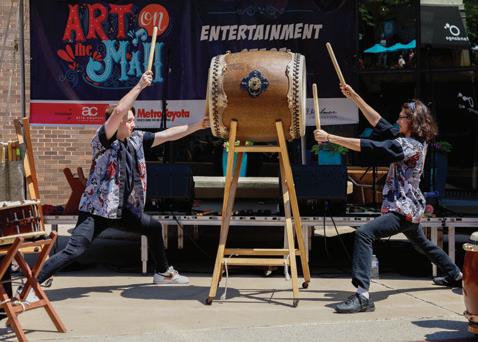
Save
— Interview by Marie Lee, edited for length and clarity


Dan Cunningham is an accidental media influencer. In fact, until Covid-19 hit, the 60-year-old Portage resident eschewed social media. But through the isolation and boredom of the pandemic, he found TikTok.
"I posted my first TikTok video about Billie the Duck, a duck with a deformed bill that kept coming up to our sliding glass doors, and it blew up," Cunningham recalls. "It really hit with nature and duck lovers around the world, and people said things to me like 'Your voice is so soothing, I just love the way you tell a story.' I was hooked."
Cunningham, had his own organizing business, The Organizer Man, so he began to make videos with organizing tricks and tips, including kitchen and cooking hacks (he provided some tips in the Five Faves feature of Encore's December 2022 issue), and it wasn't long before Amazon reached out. He now reviews and demonstrates products for Amazon as well as for other companies such as Instant Brands — the company that sells Instant Pot. He has garnered nearly 500,000 followers on Facebook
(continued on page 33)




You’ll find it at every meal, every dish. At the chophouse that puts fire in each selection and the brewpub where craft beer is king. Head to the buffet for an all-you-can-enjoy array of international cuisine or race to the sportsbar that brings the crowd to its feet with big-game action and game-day fare.
